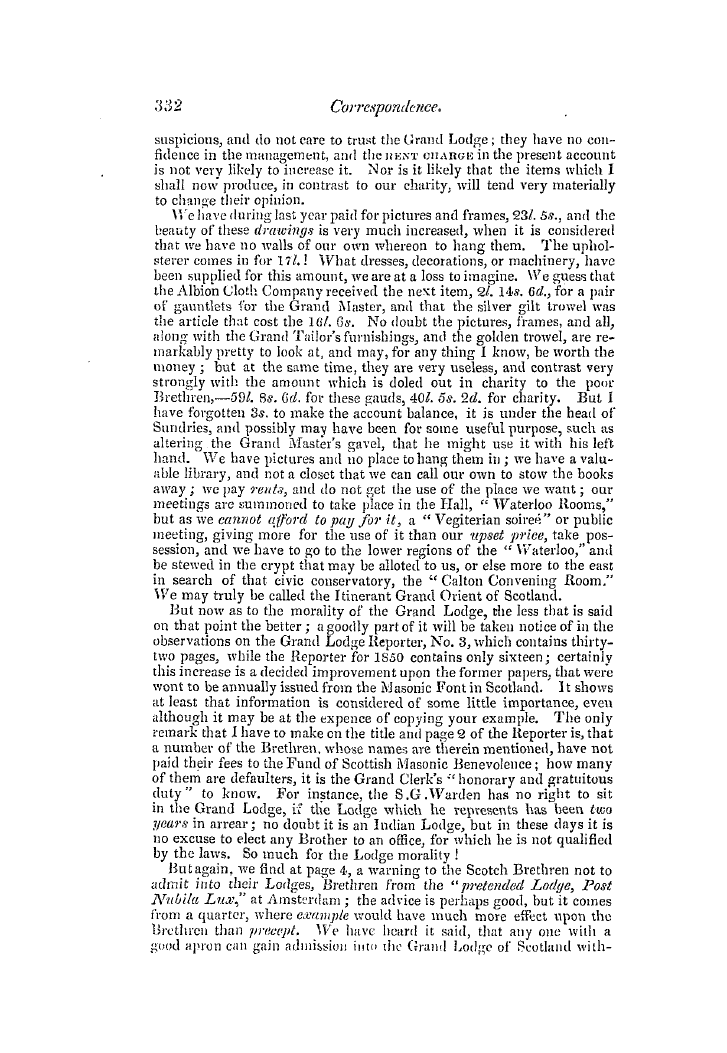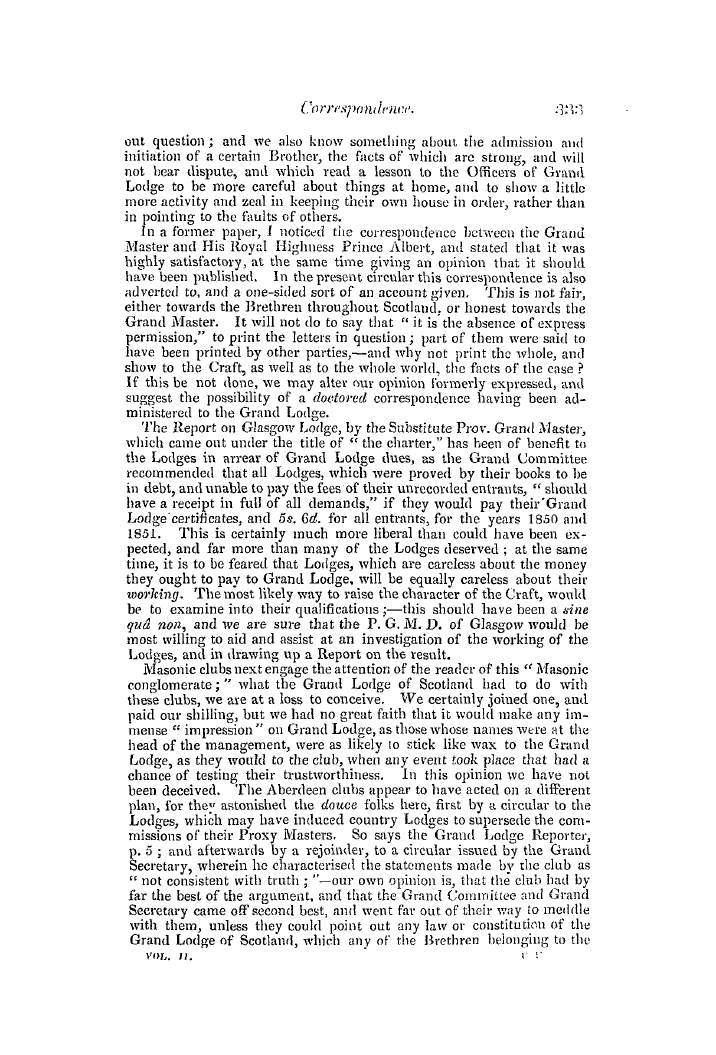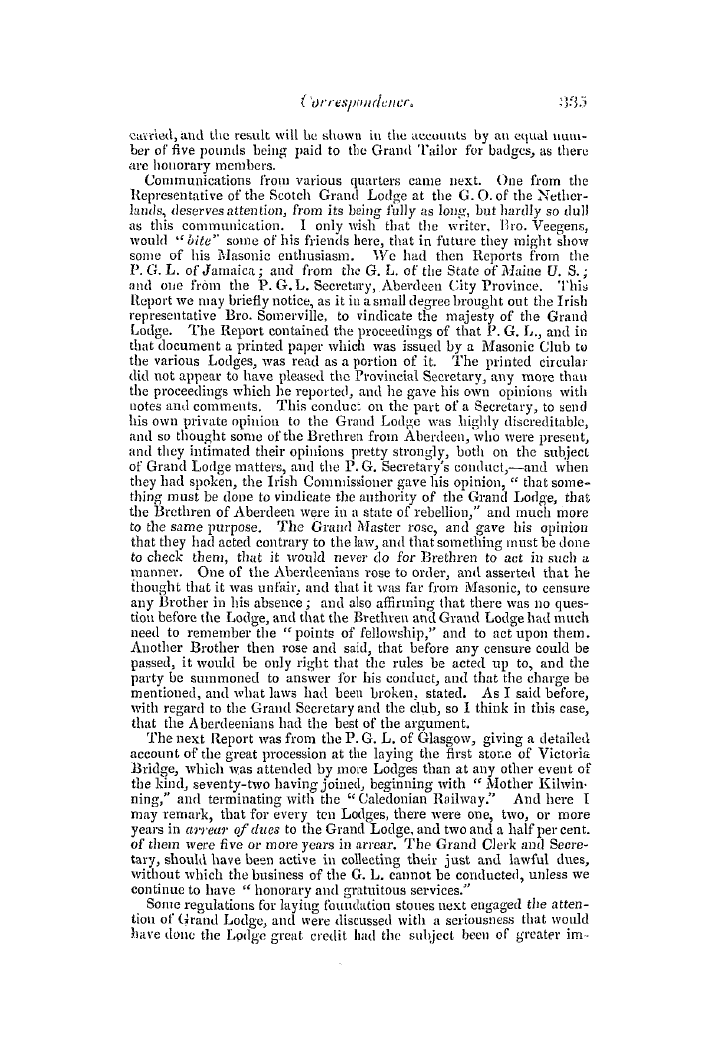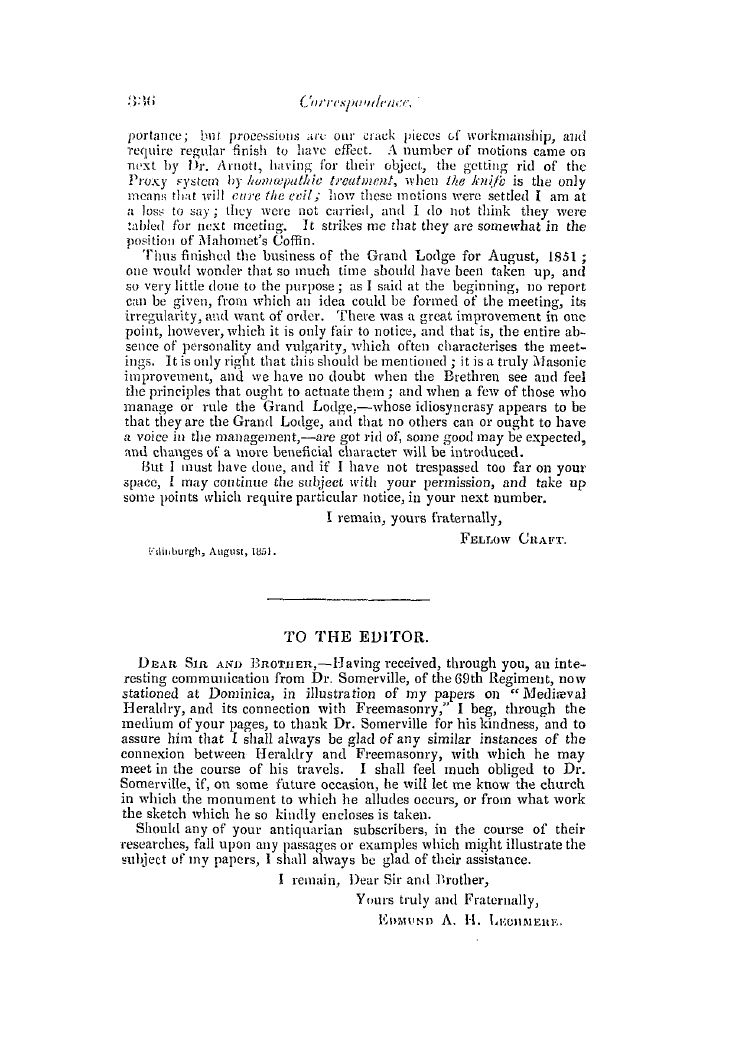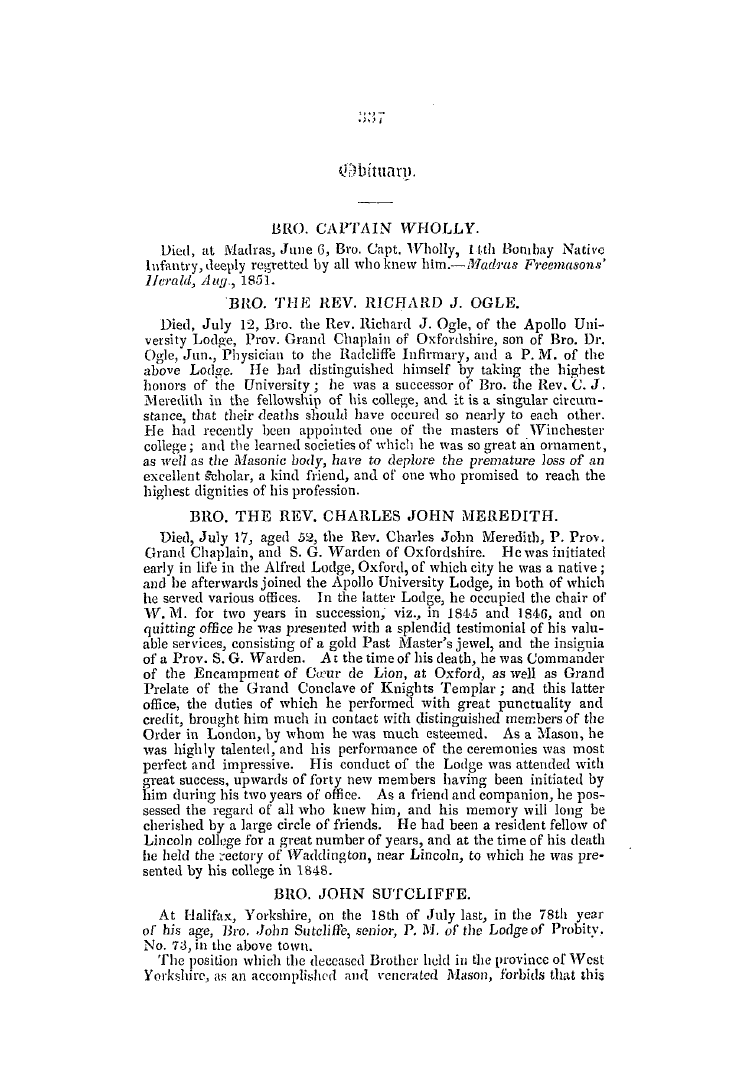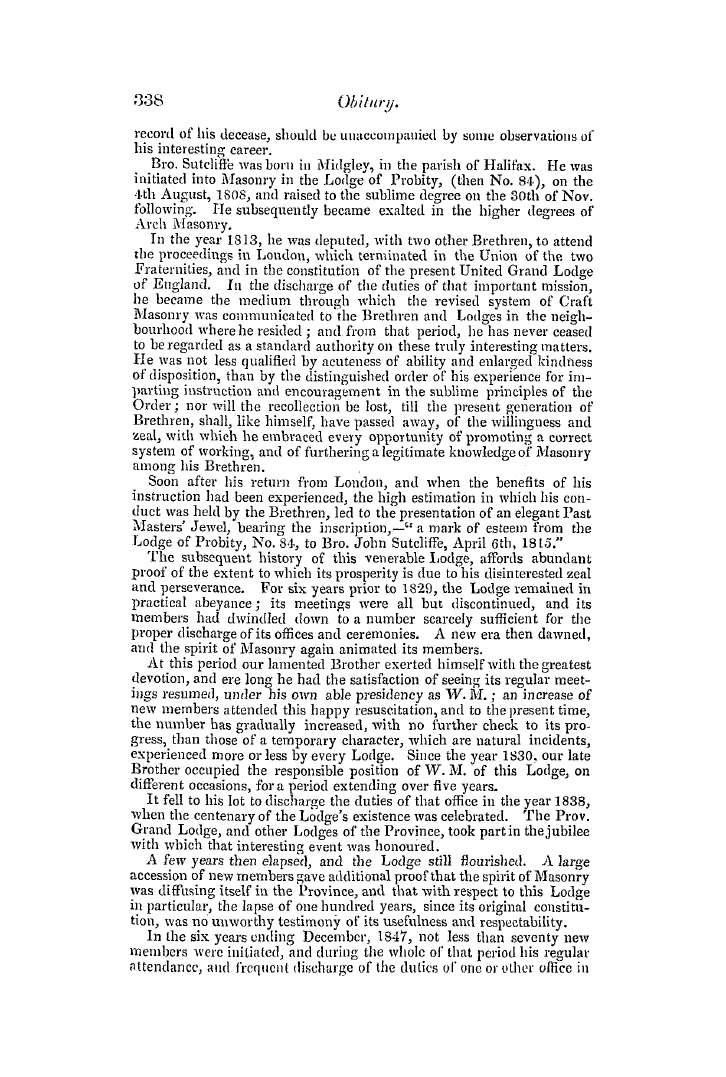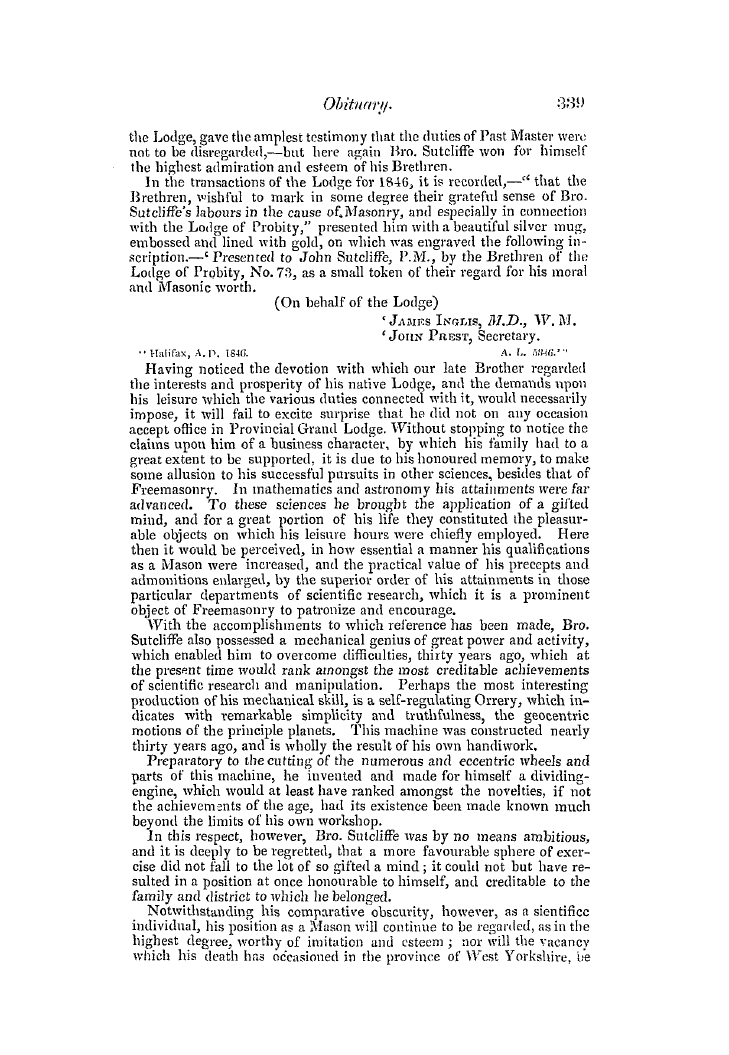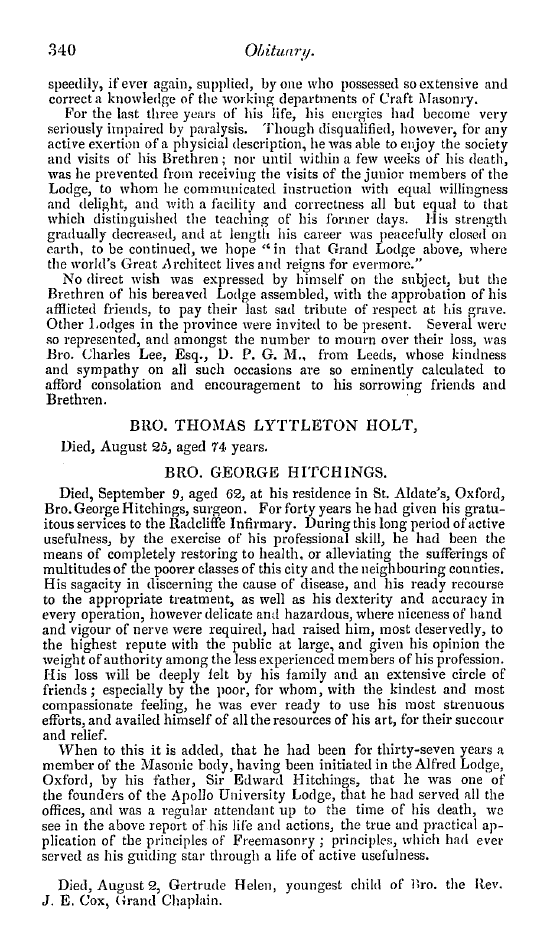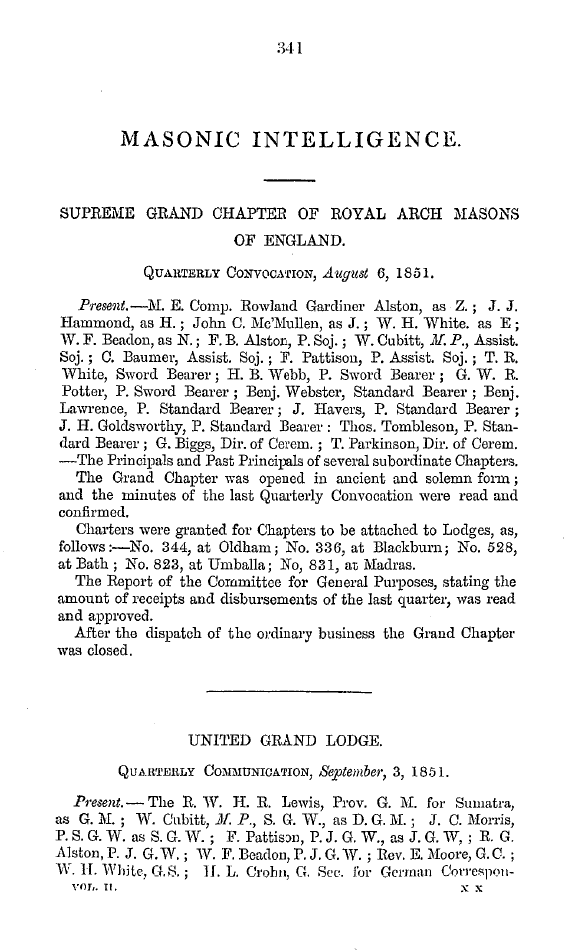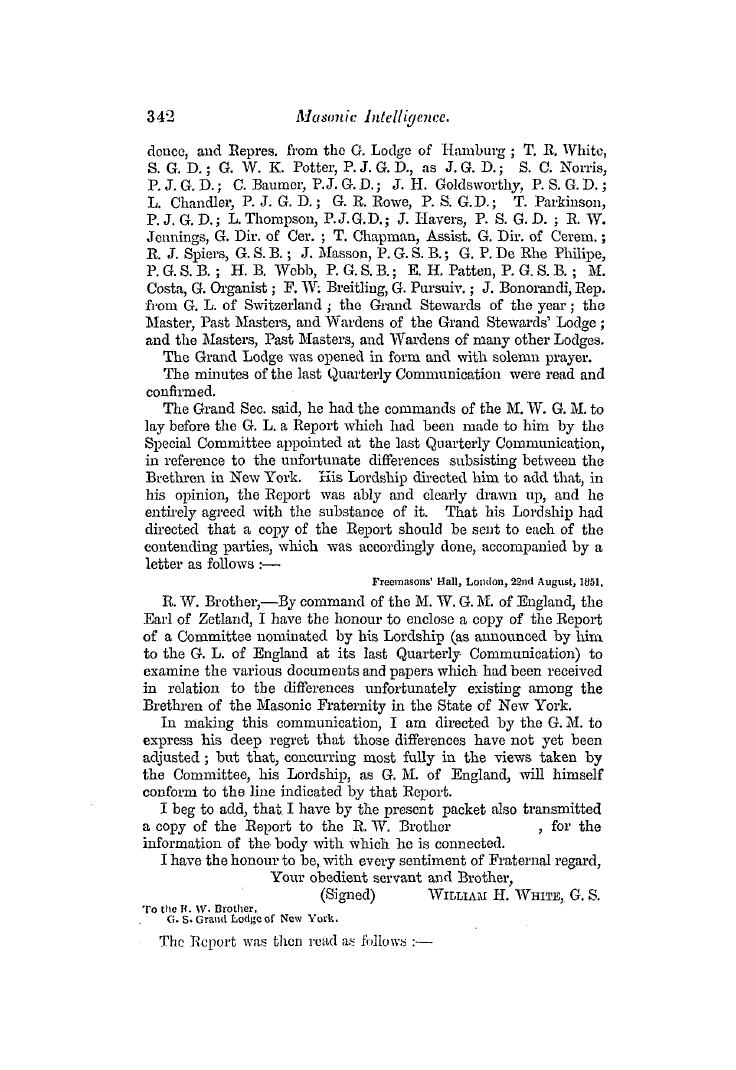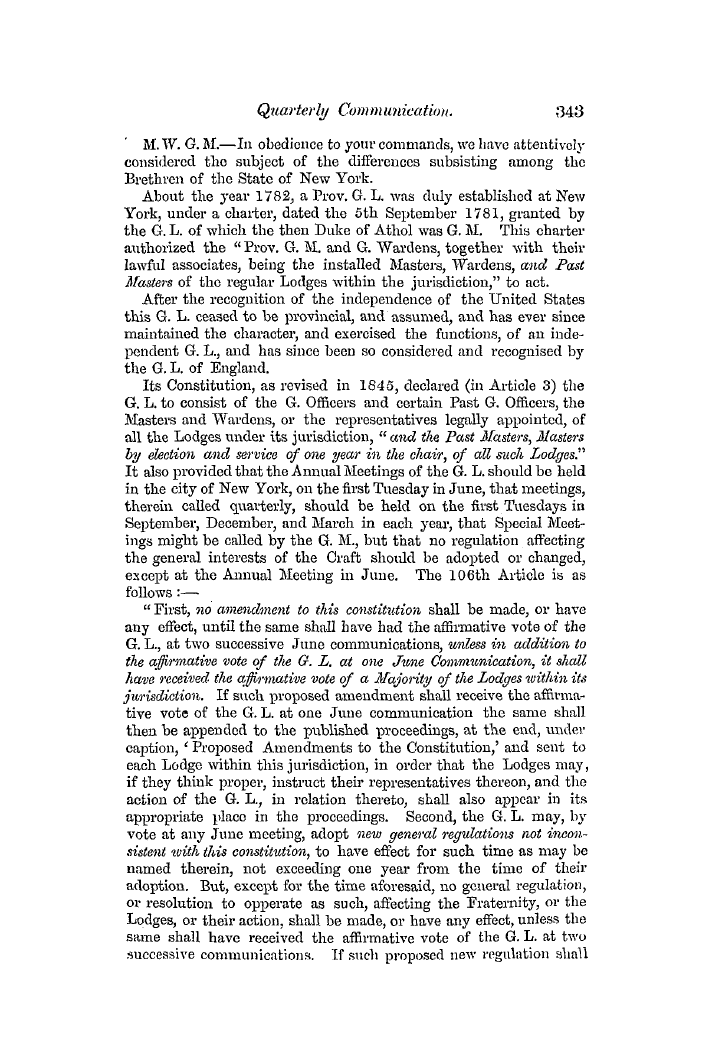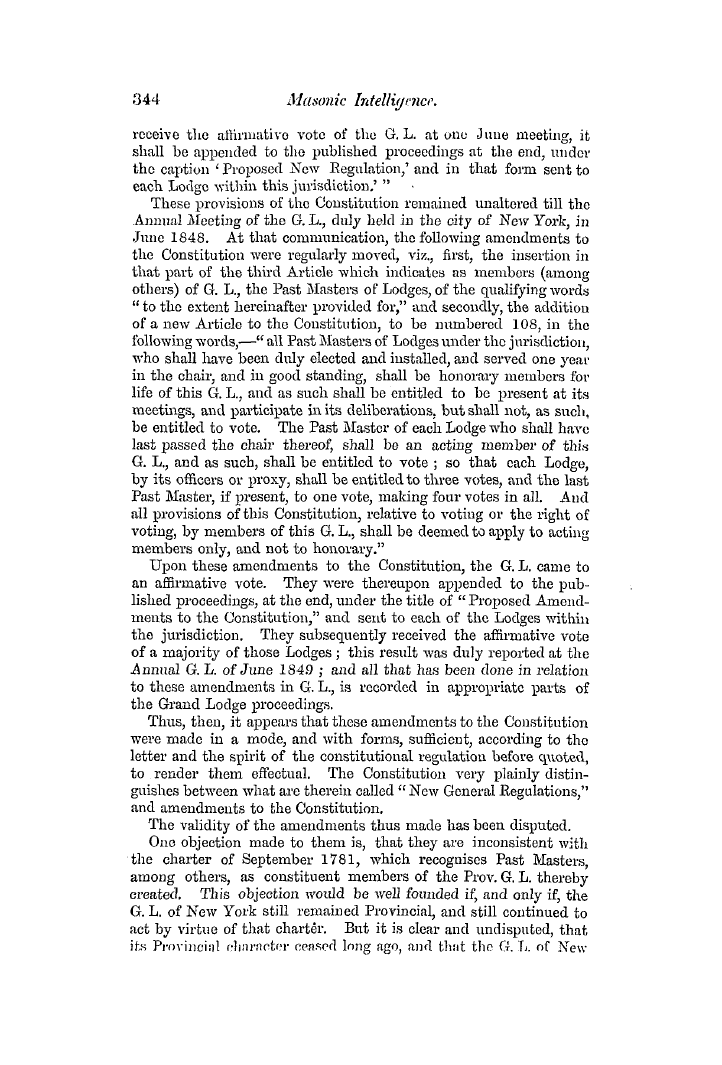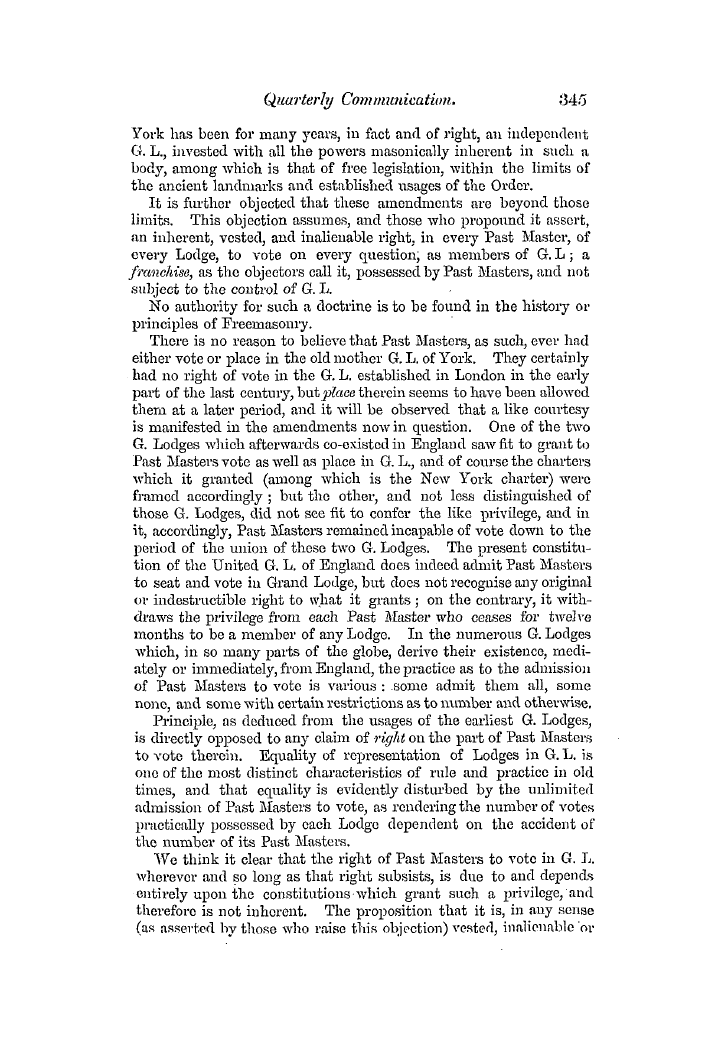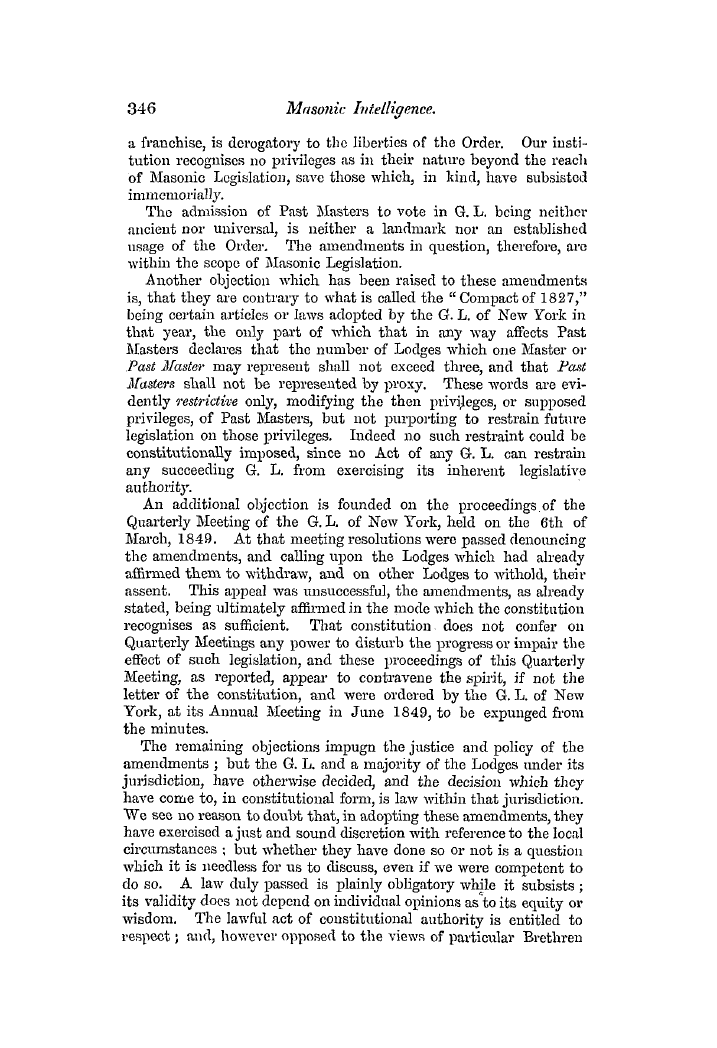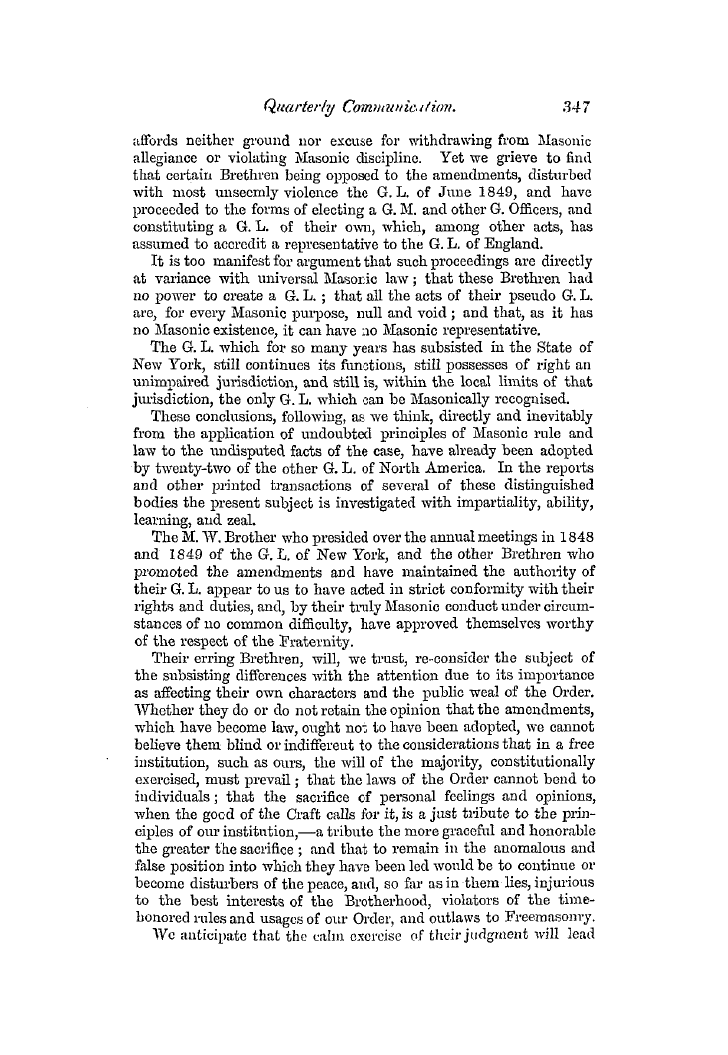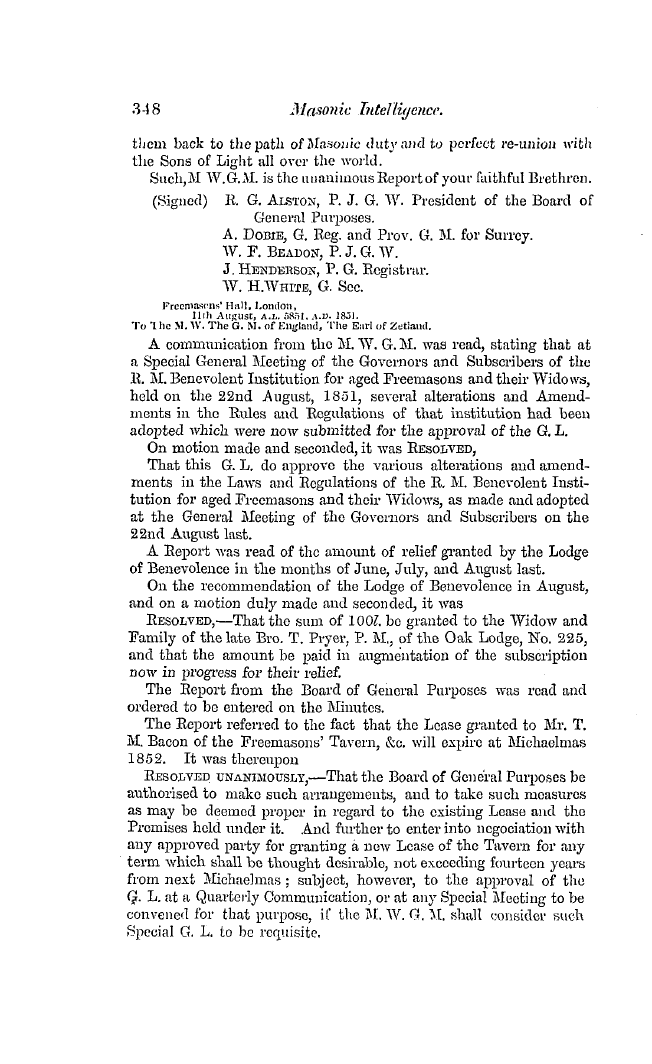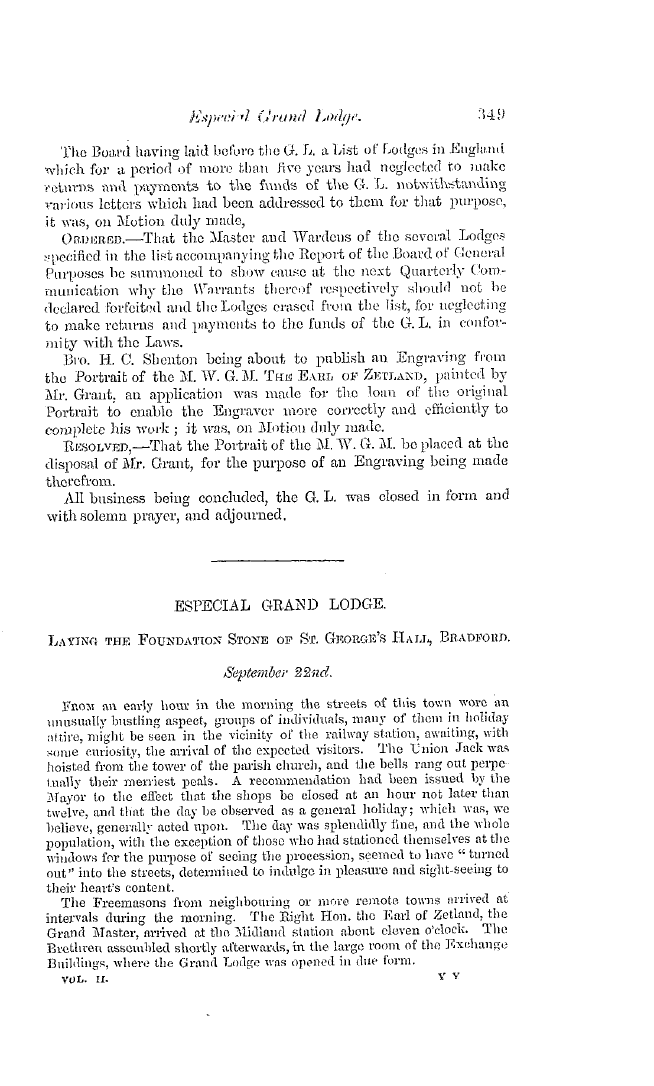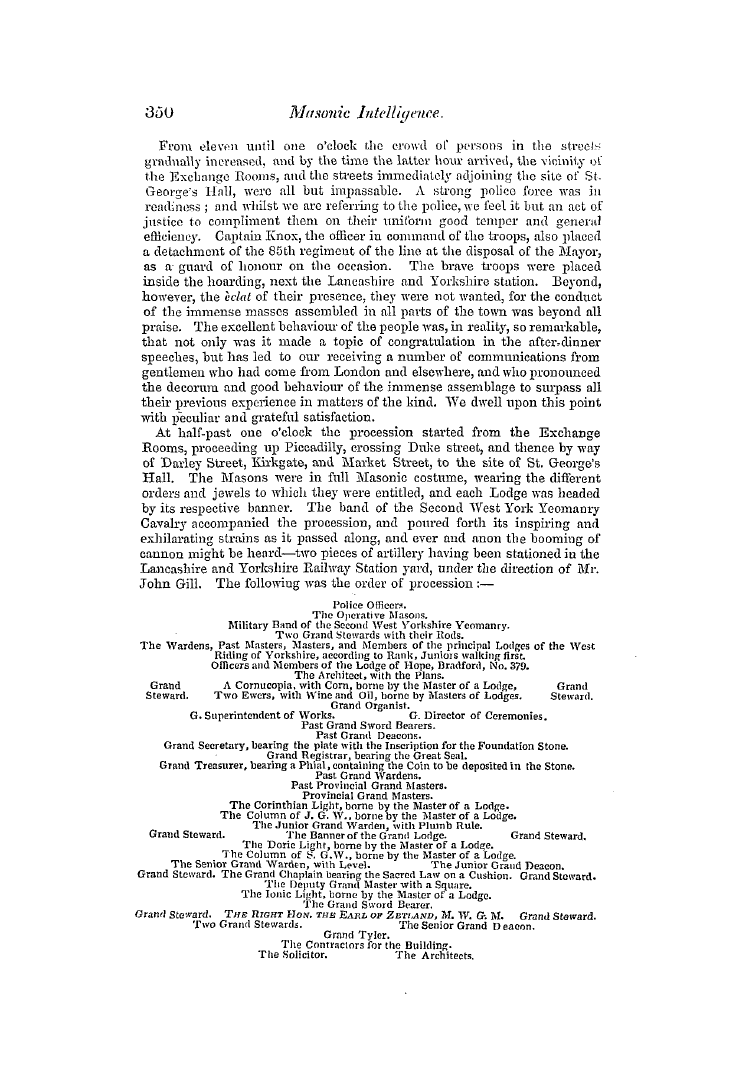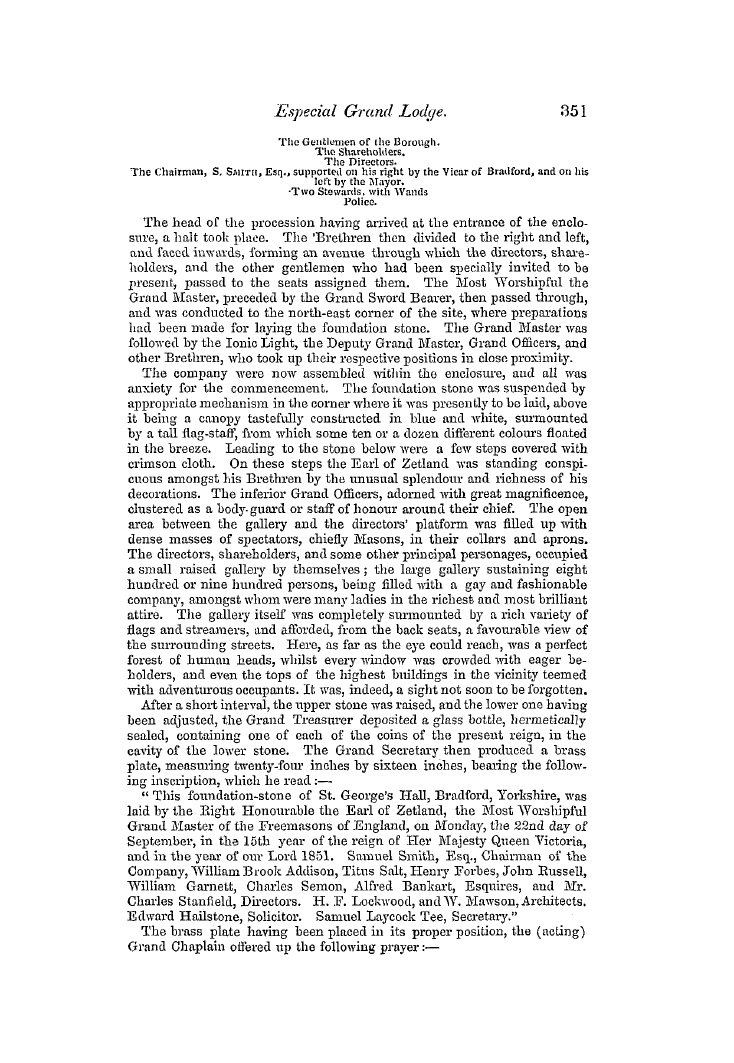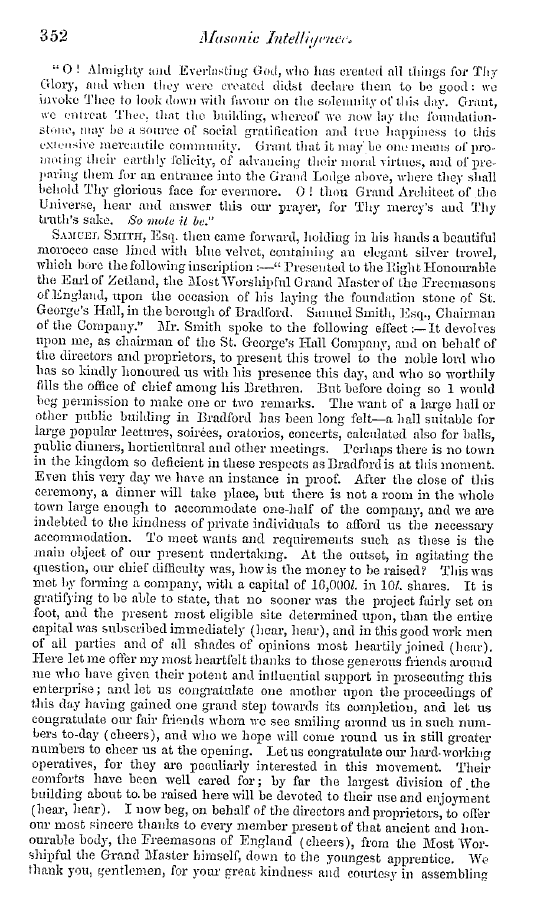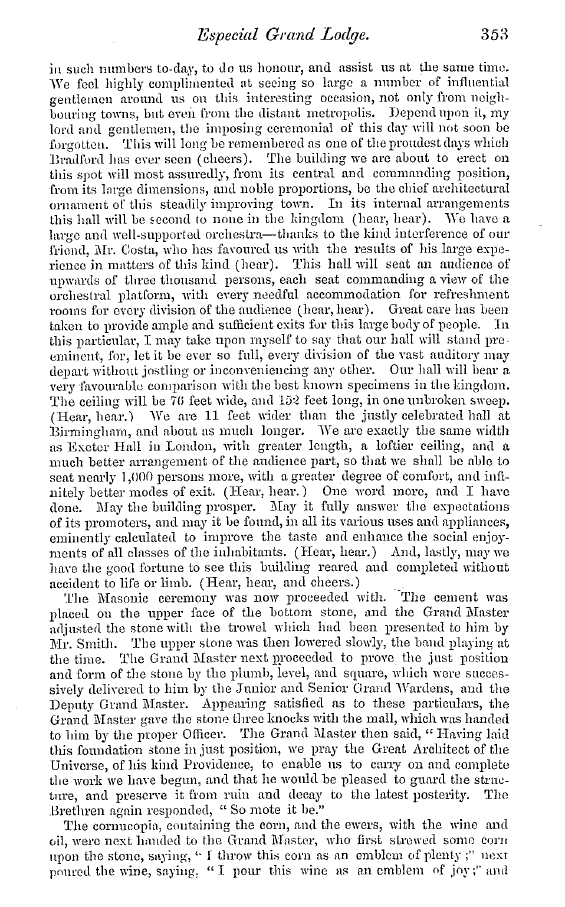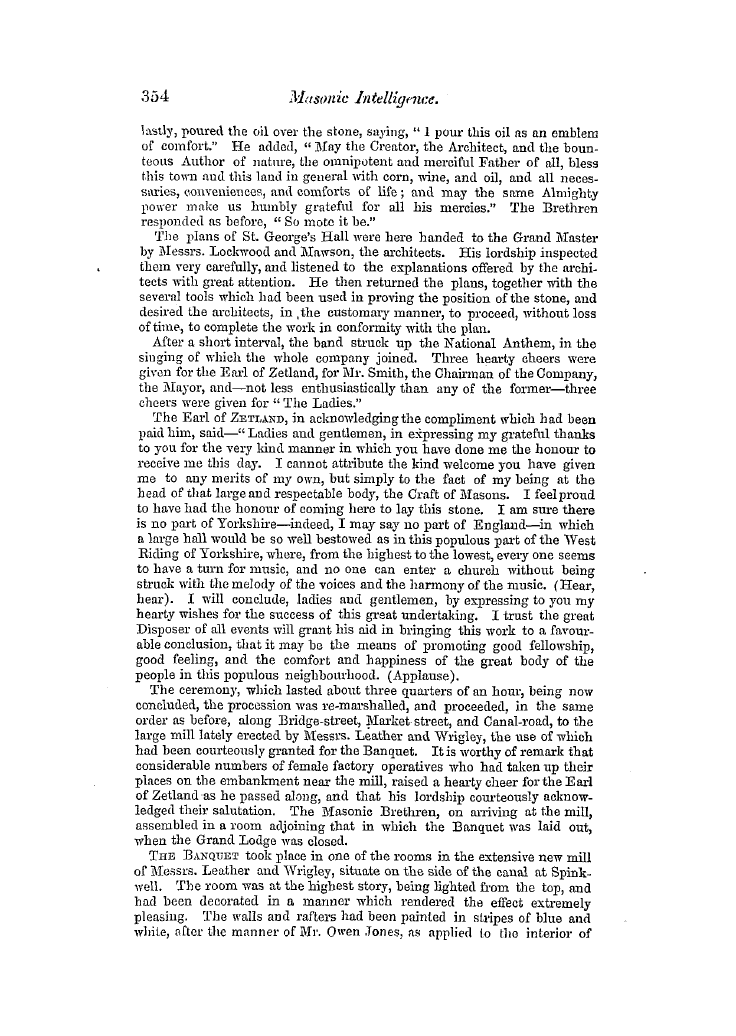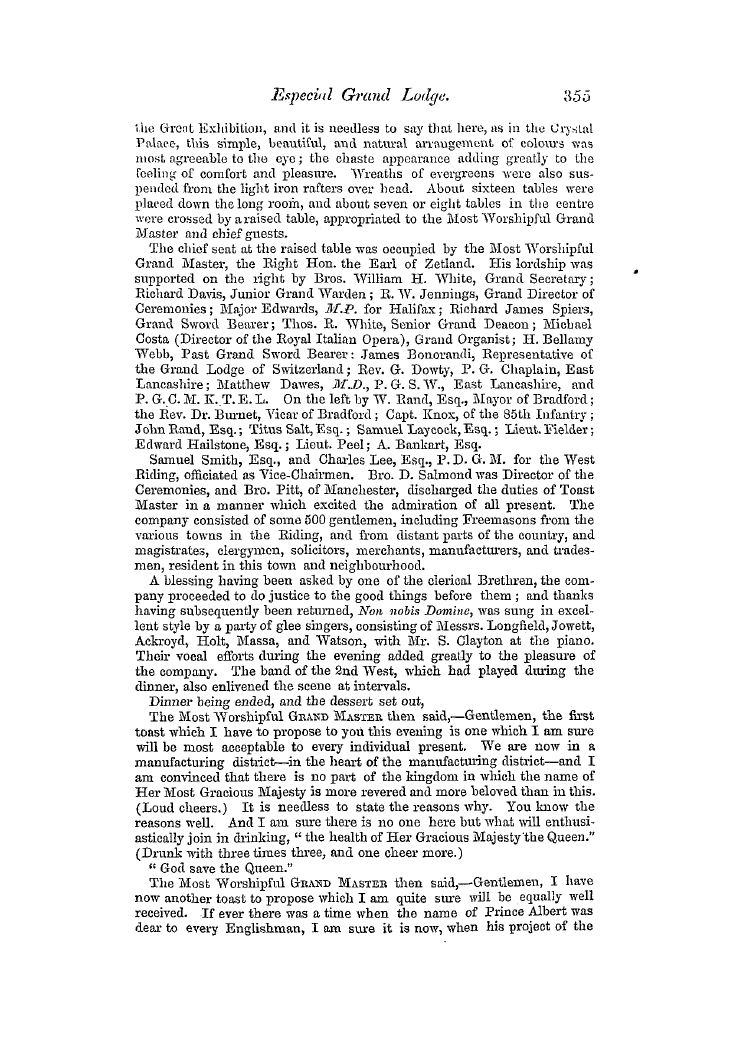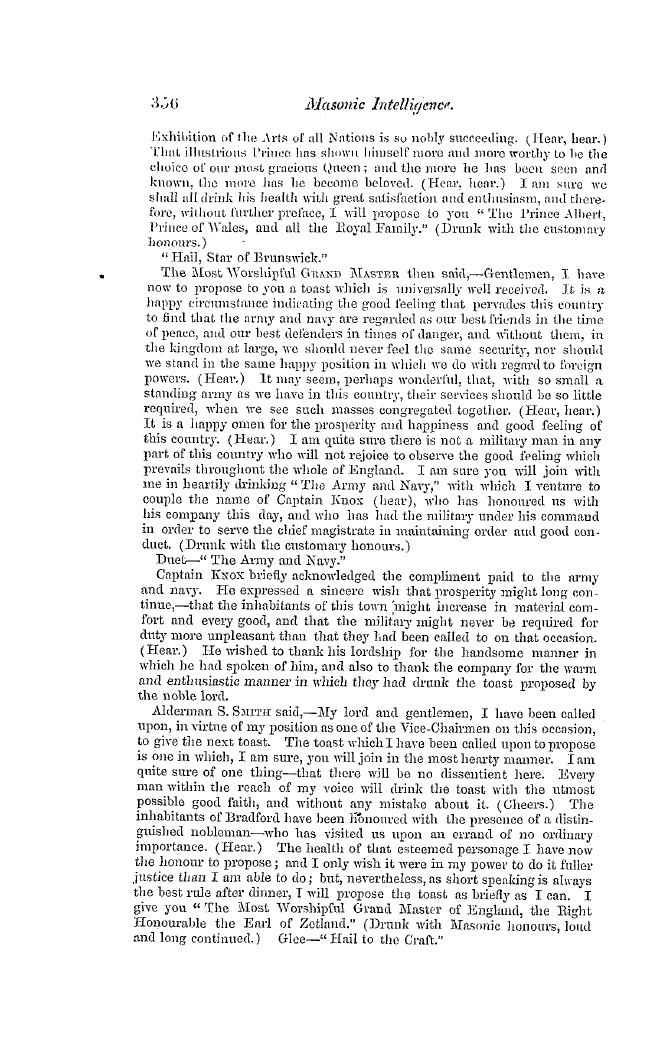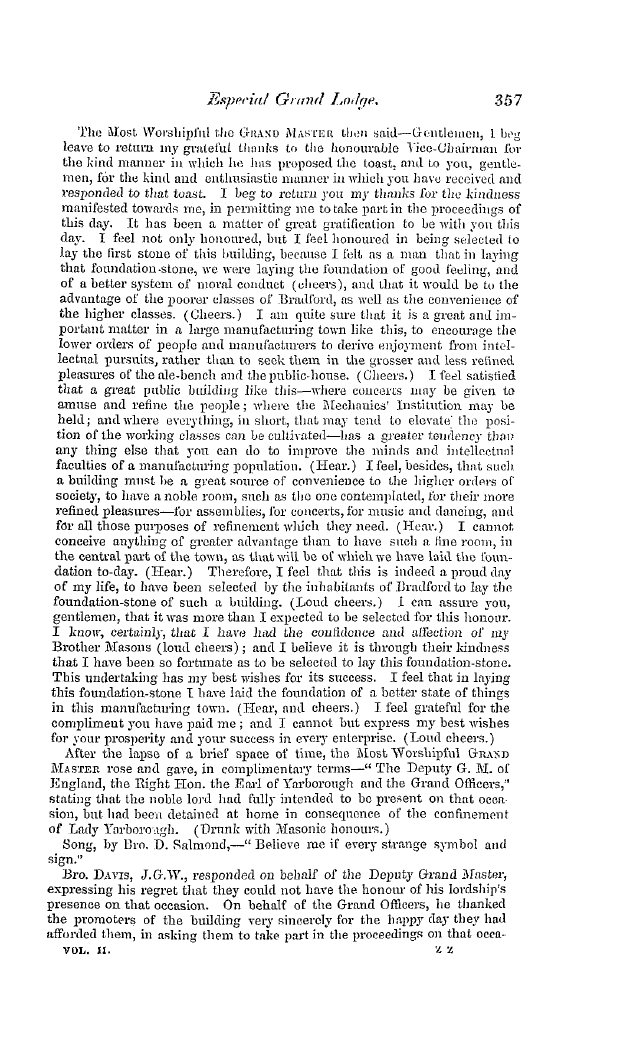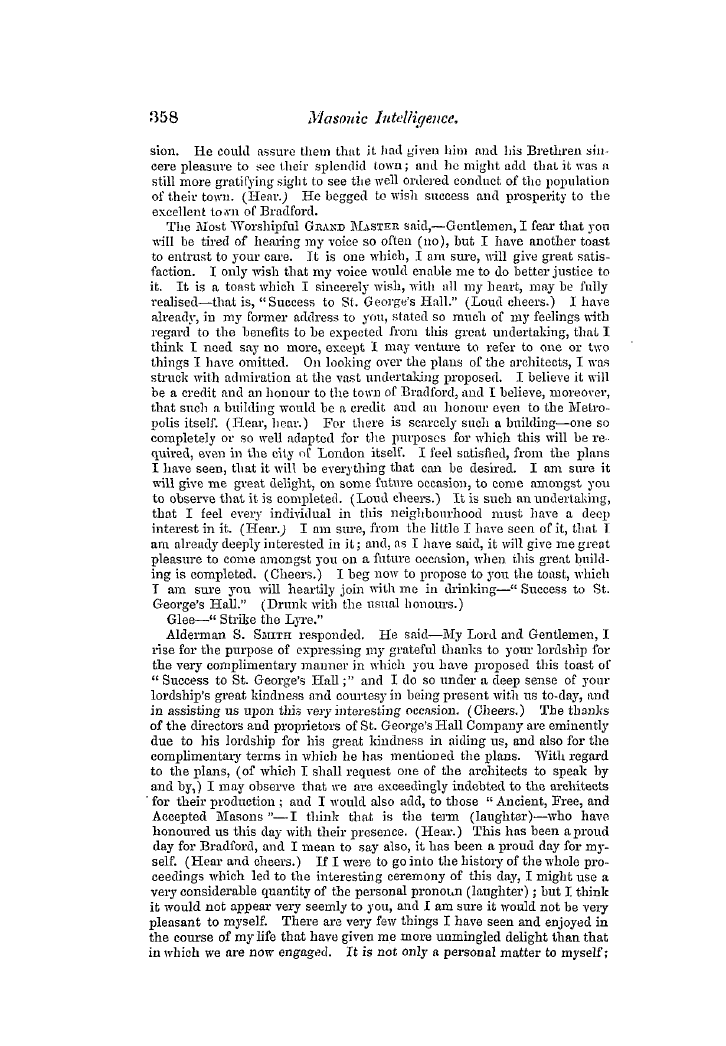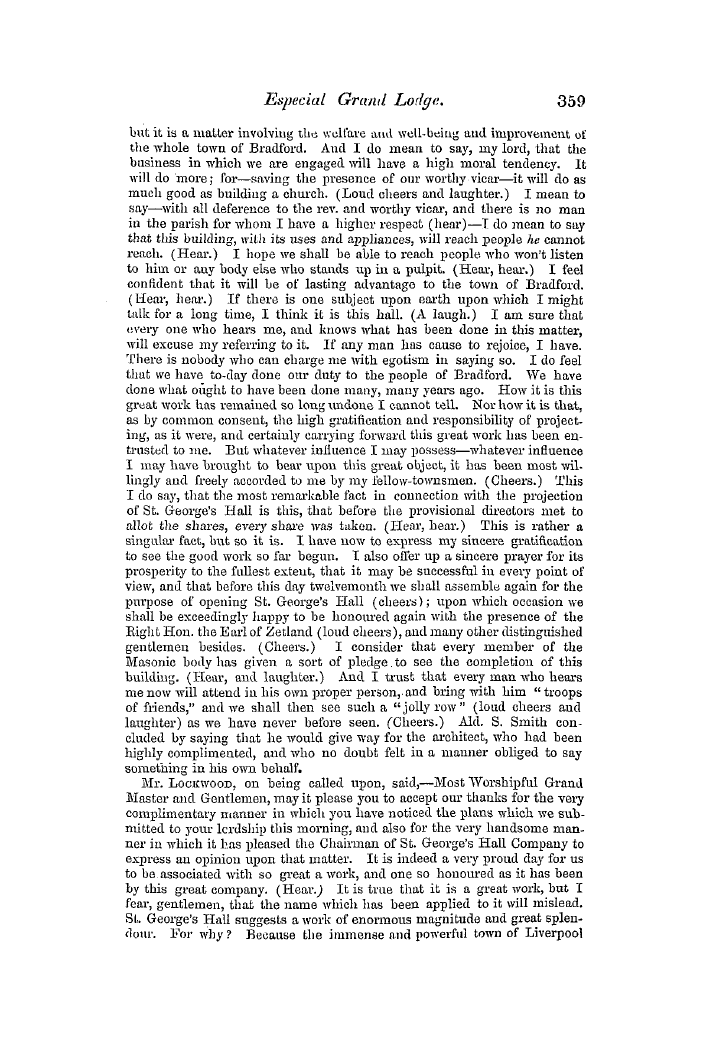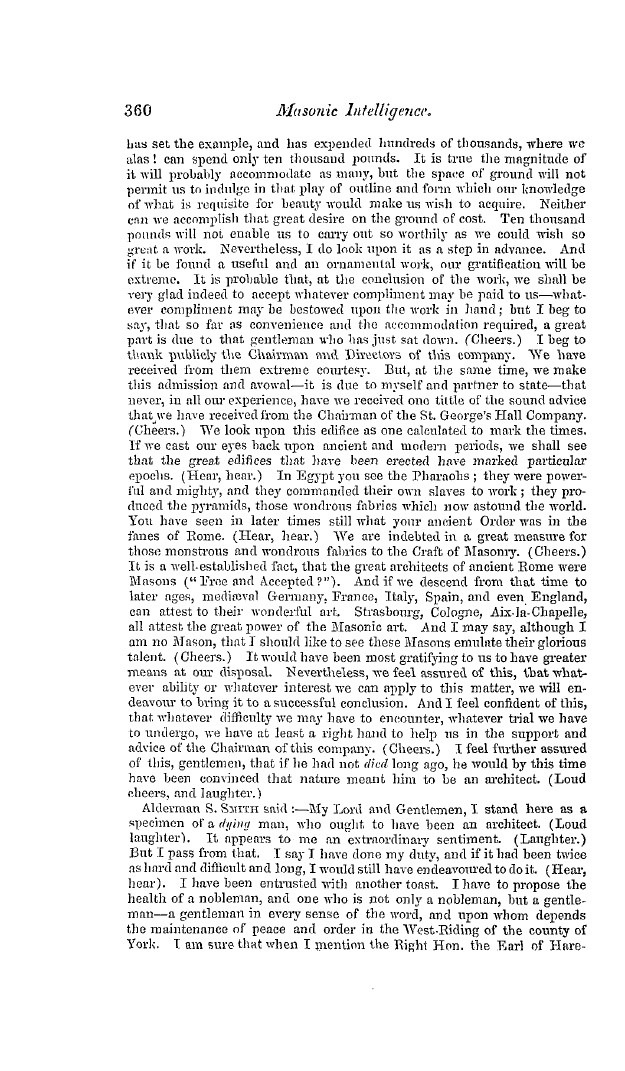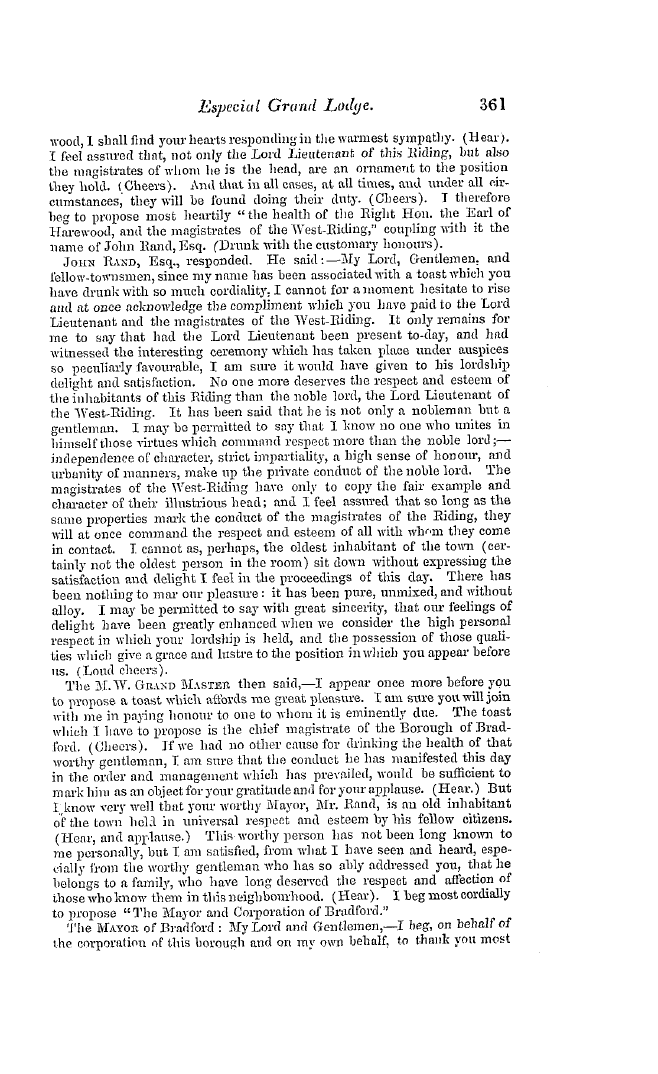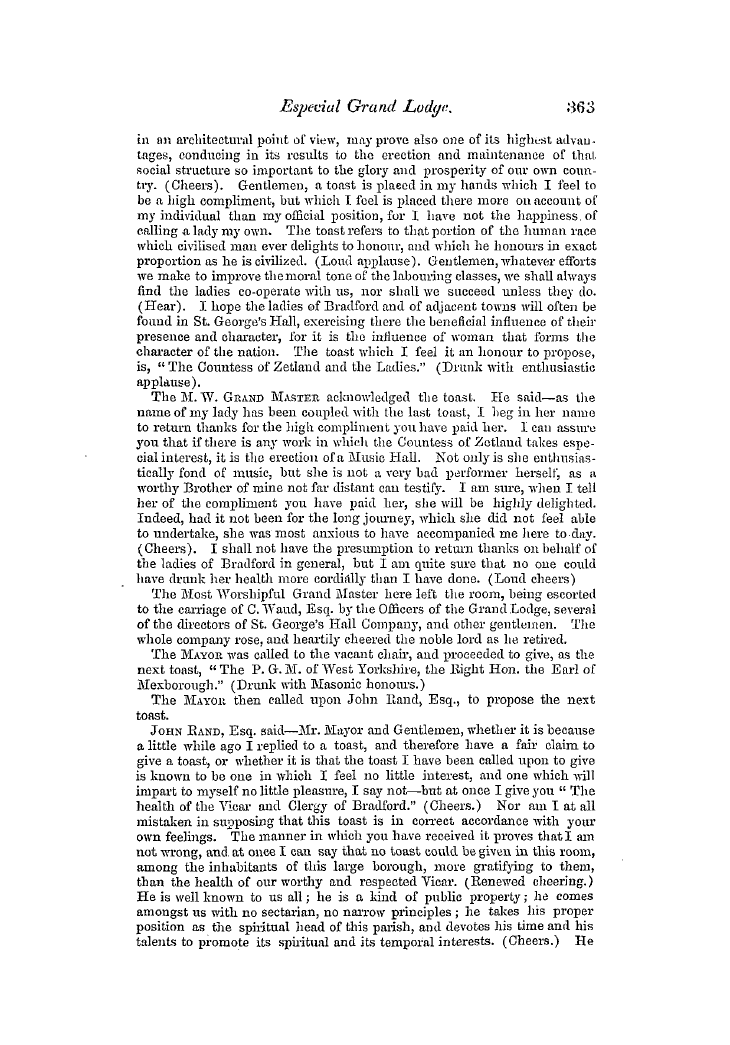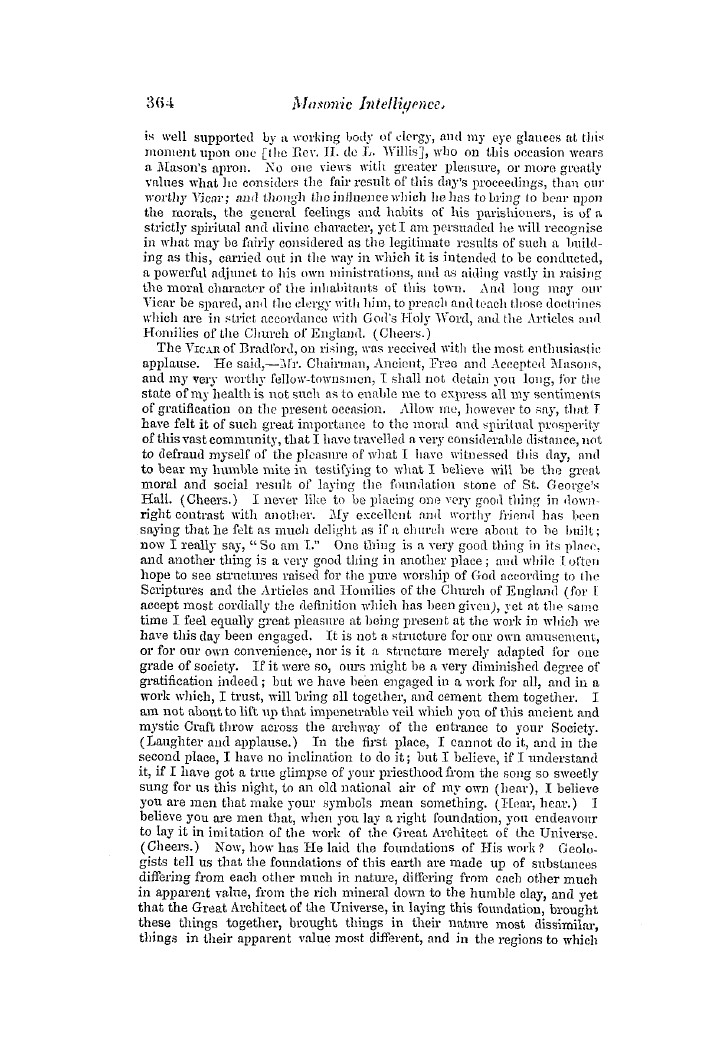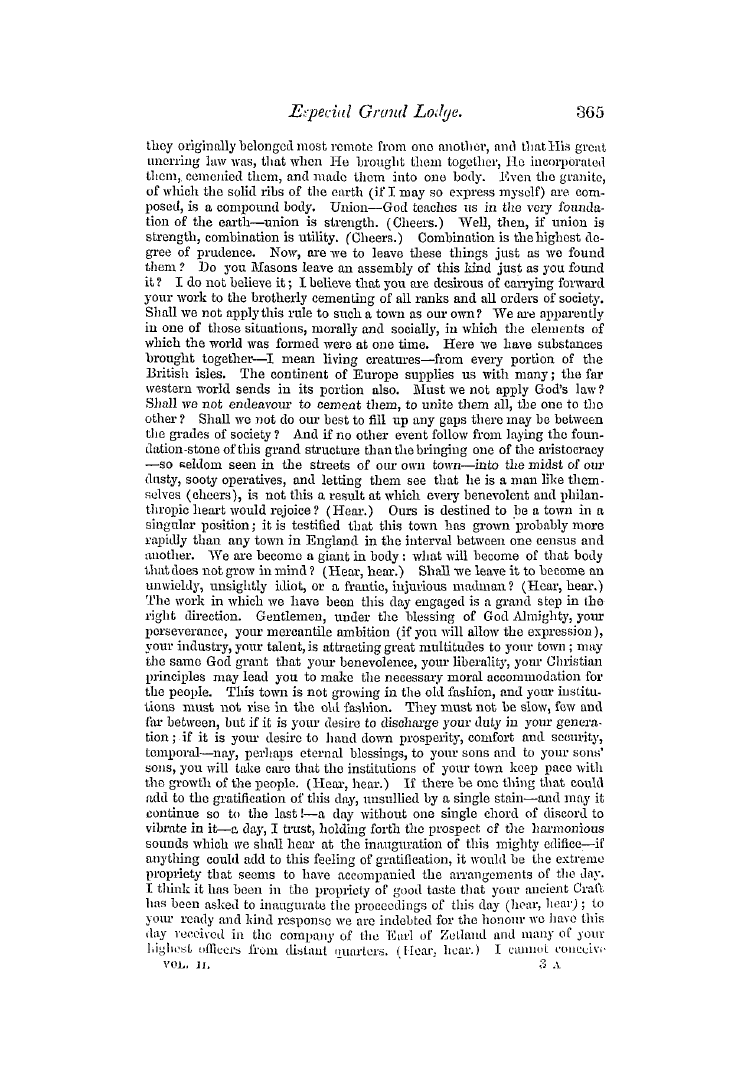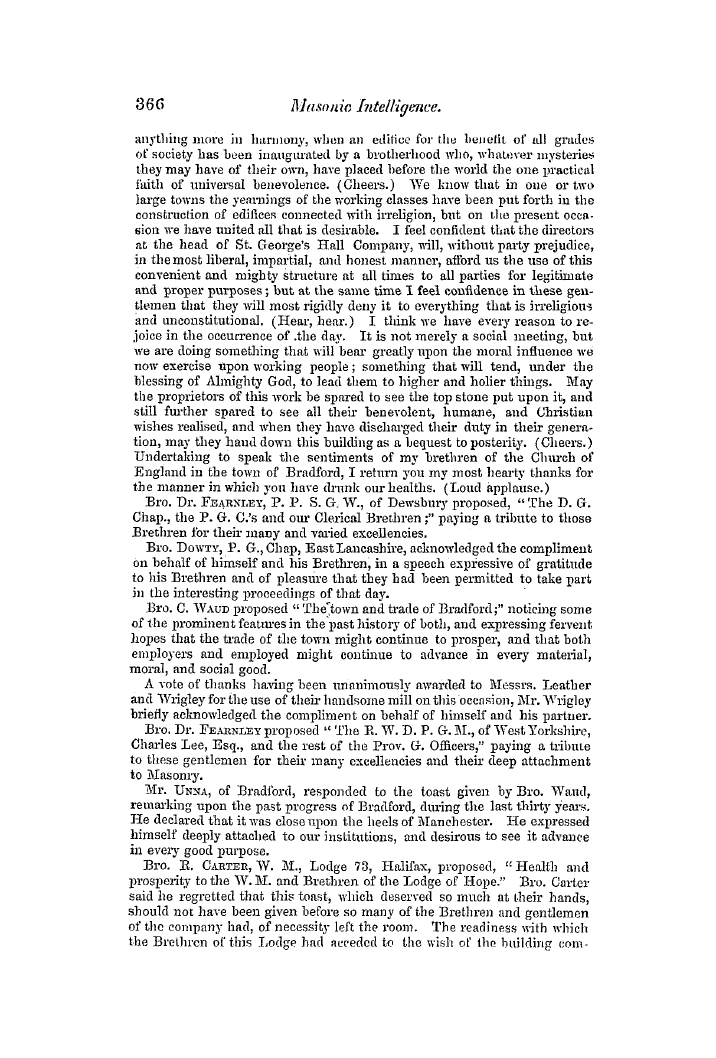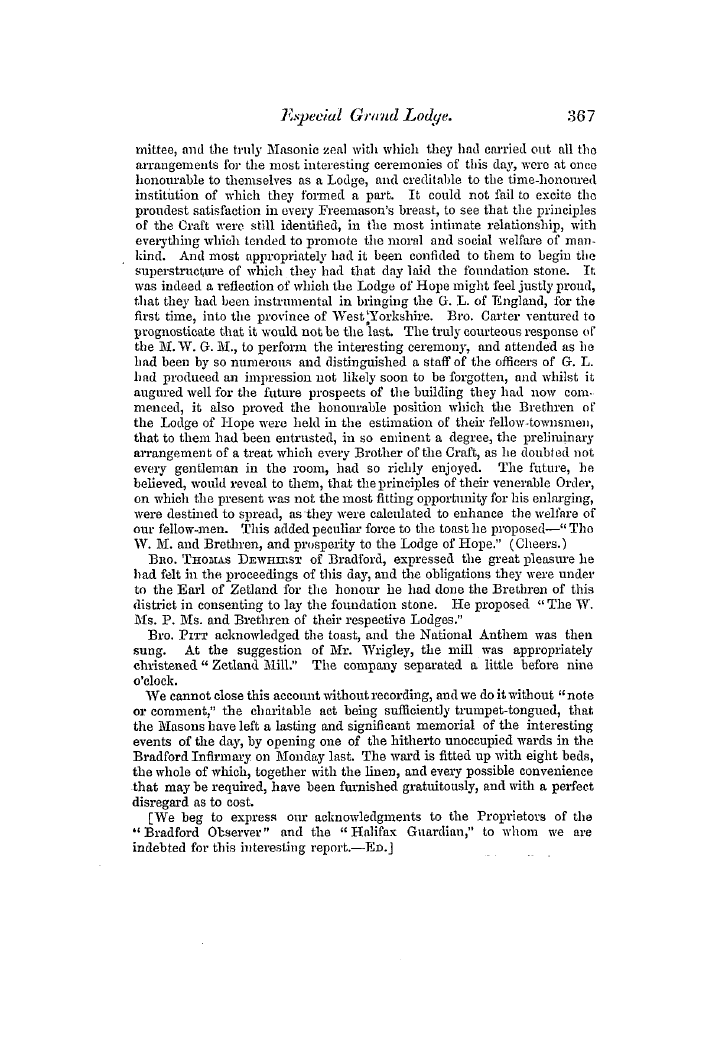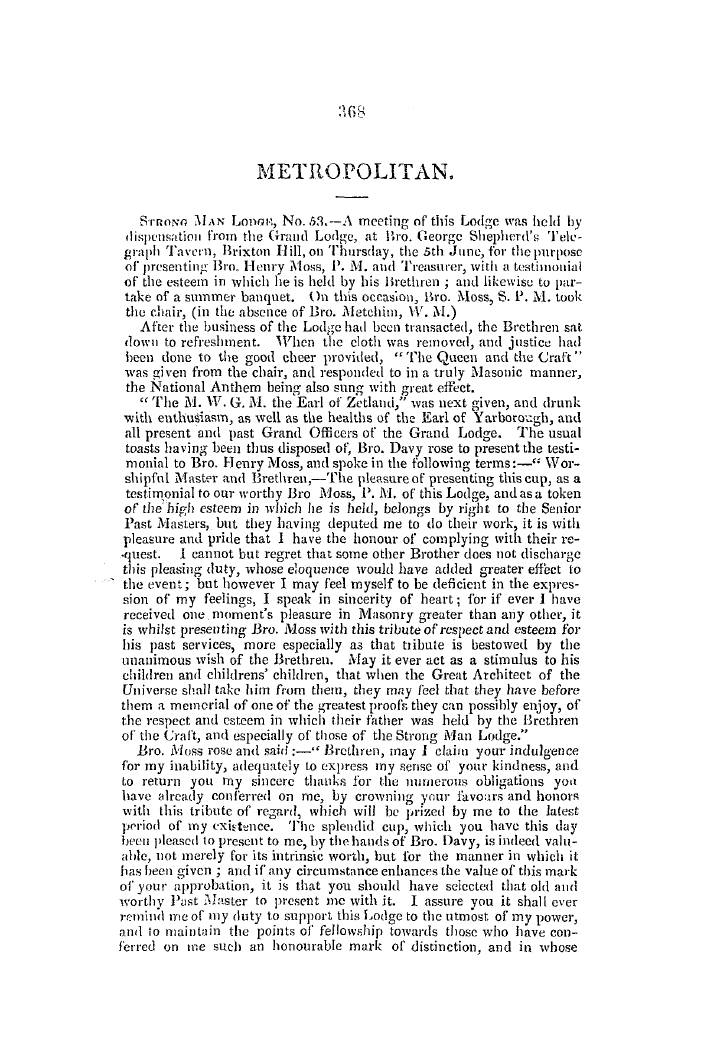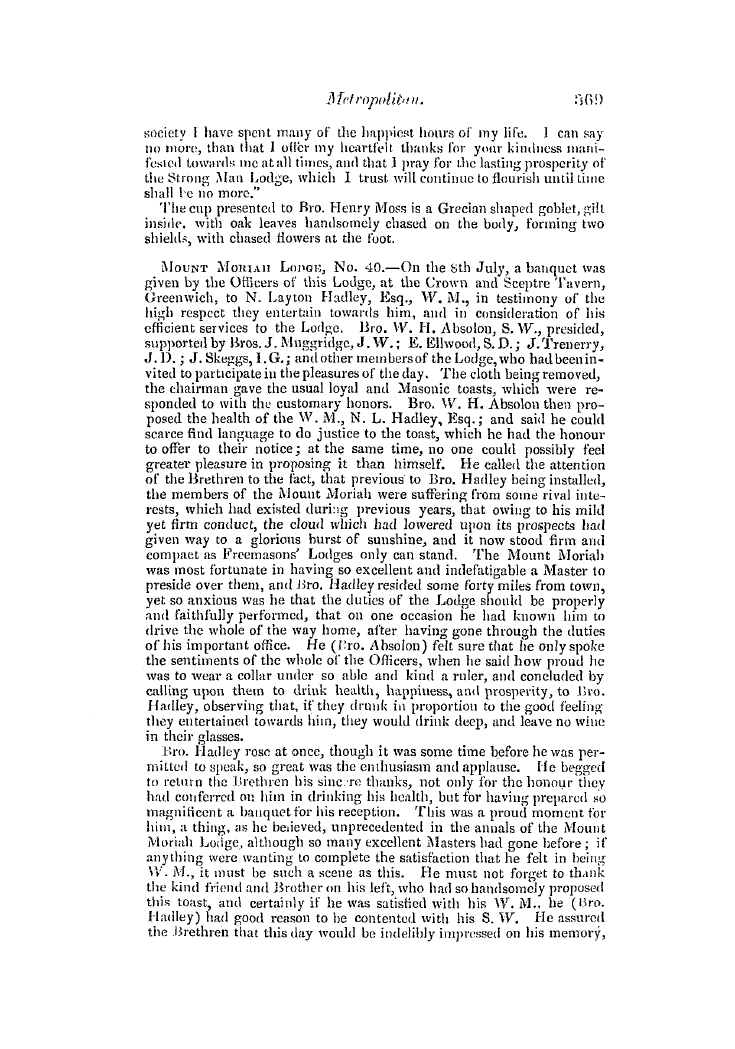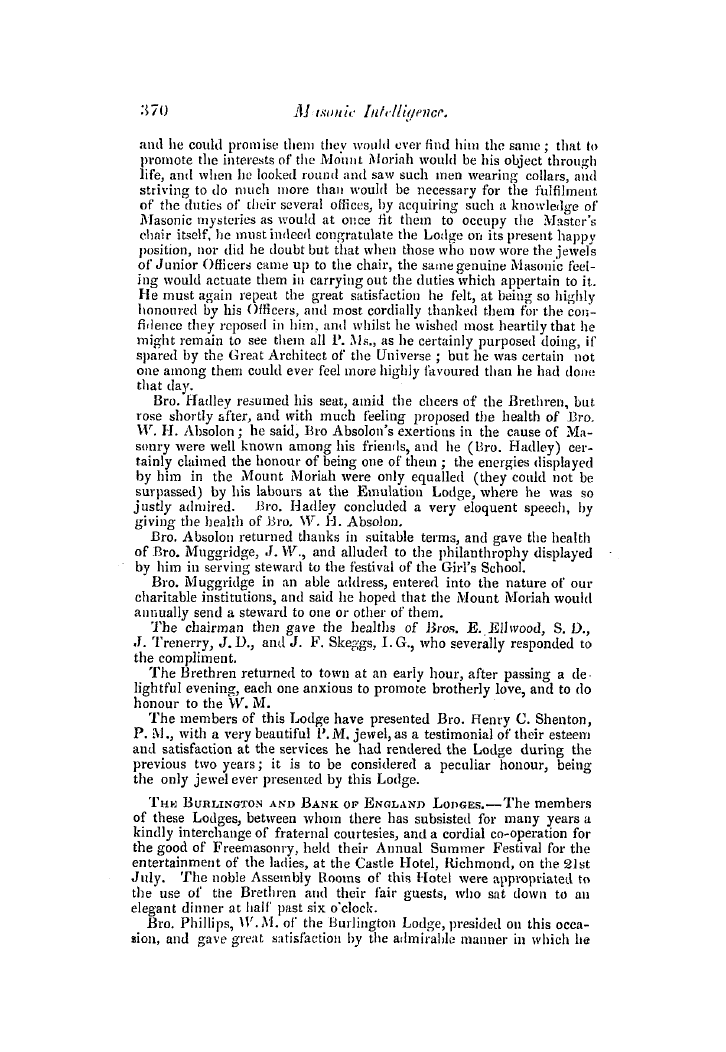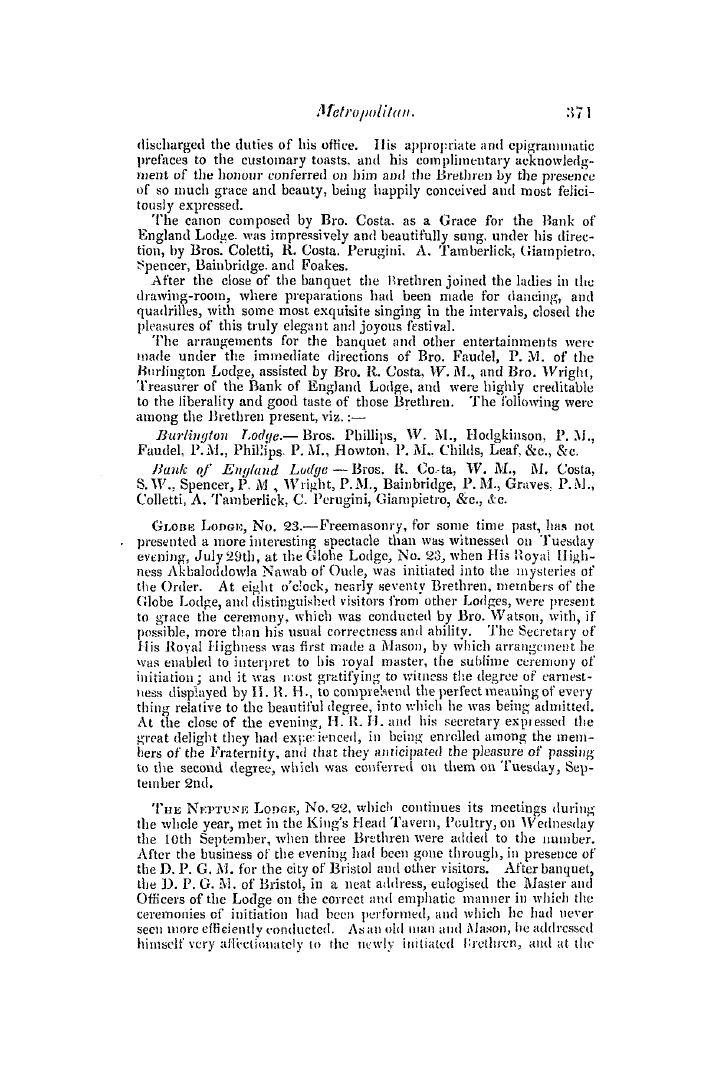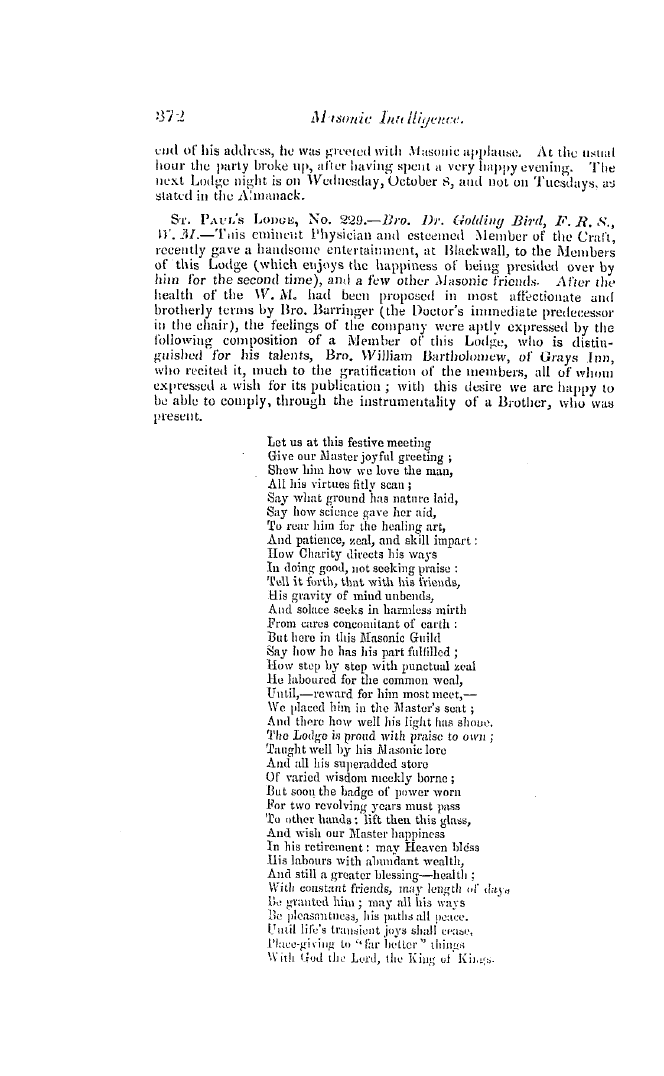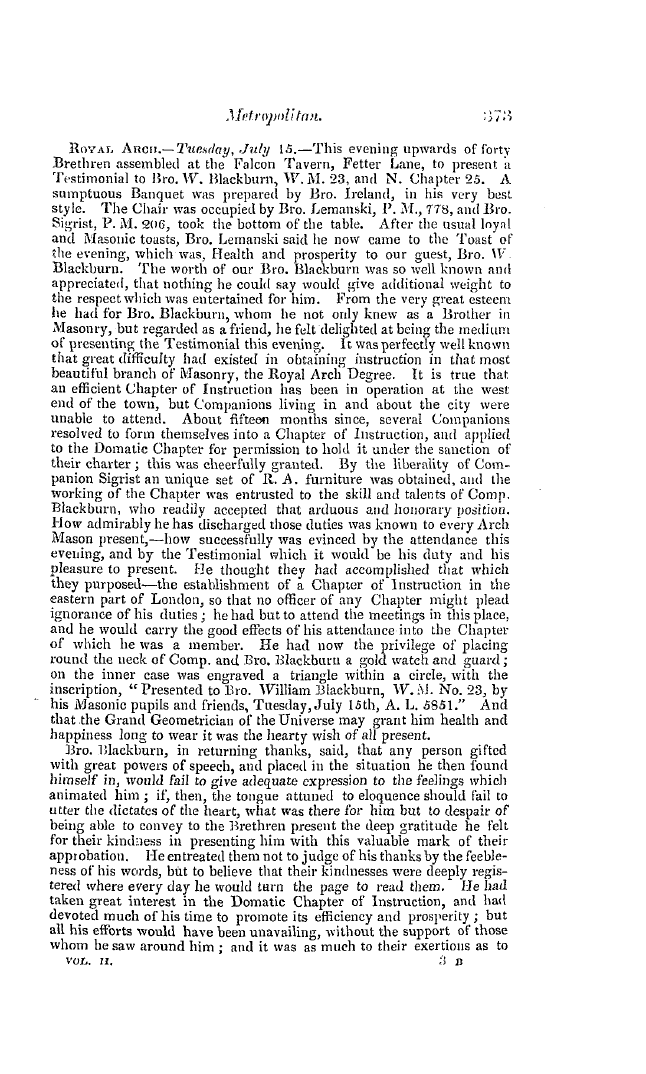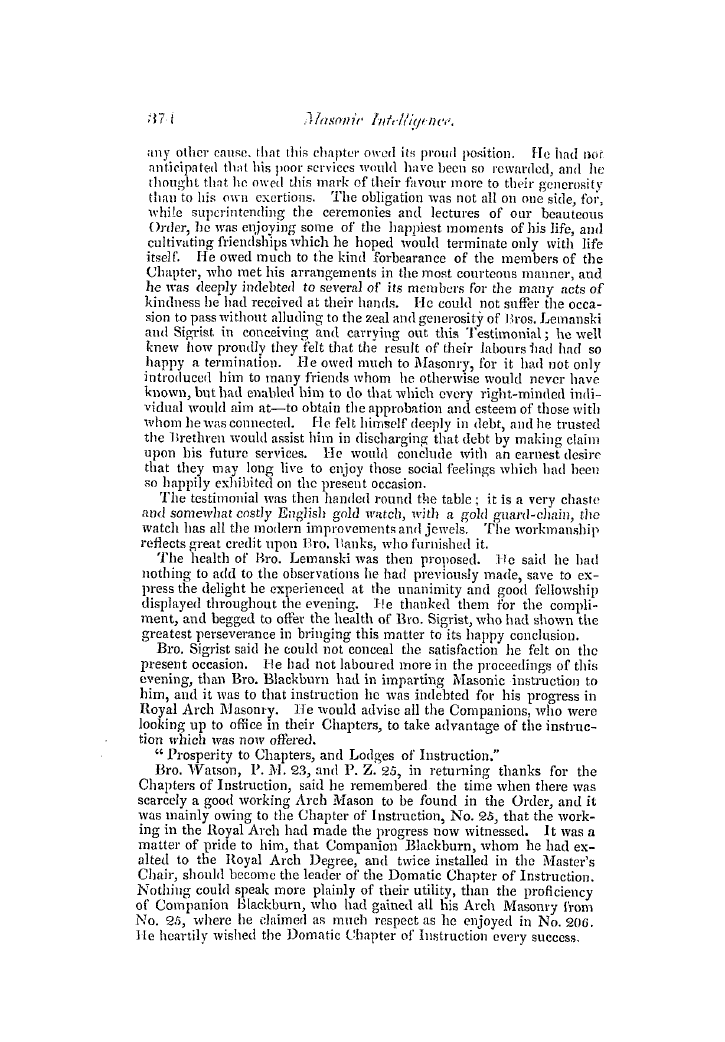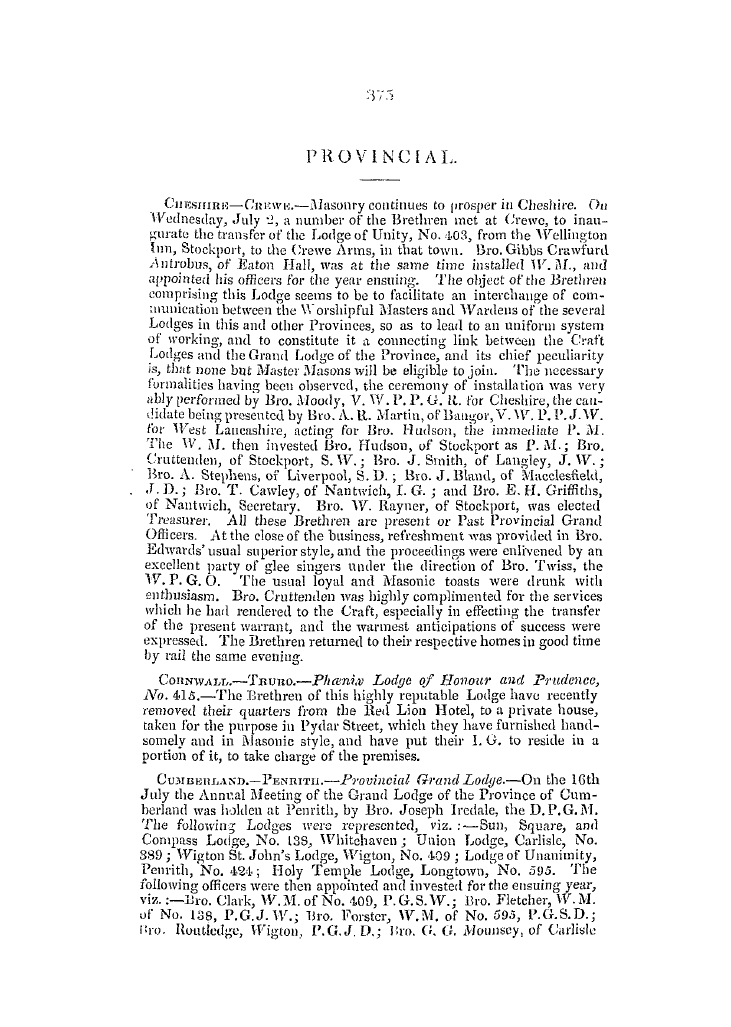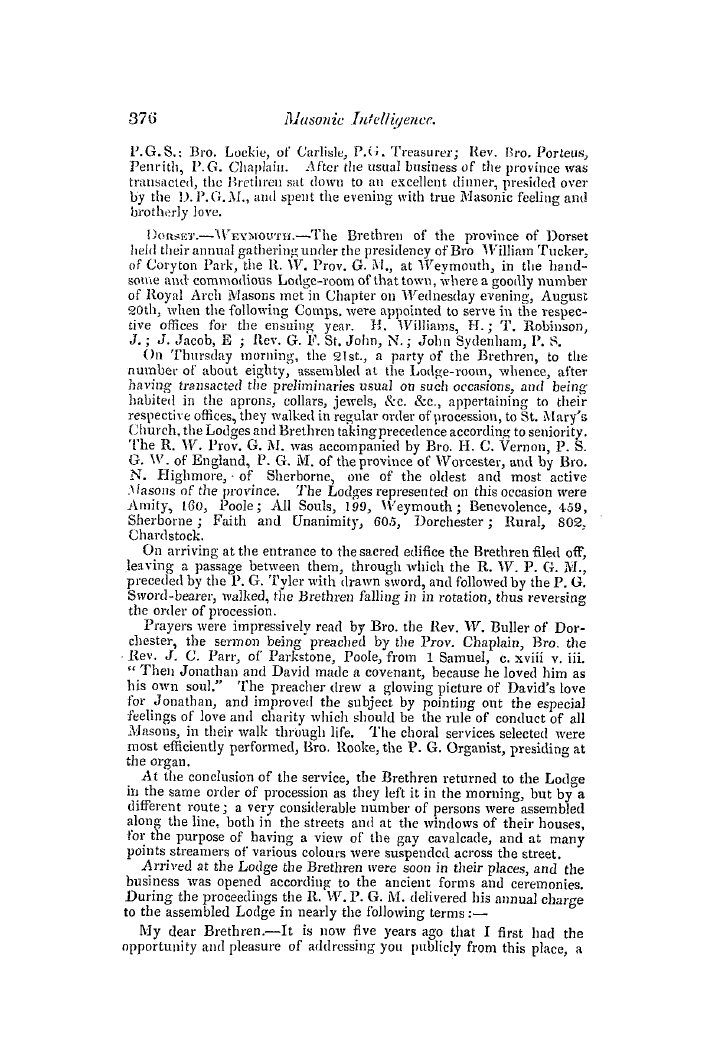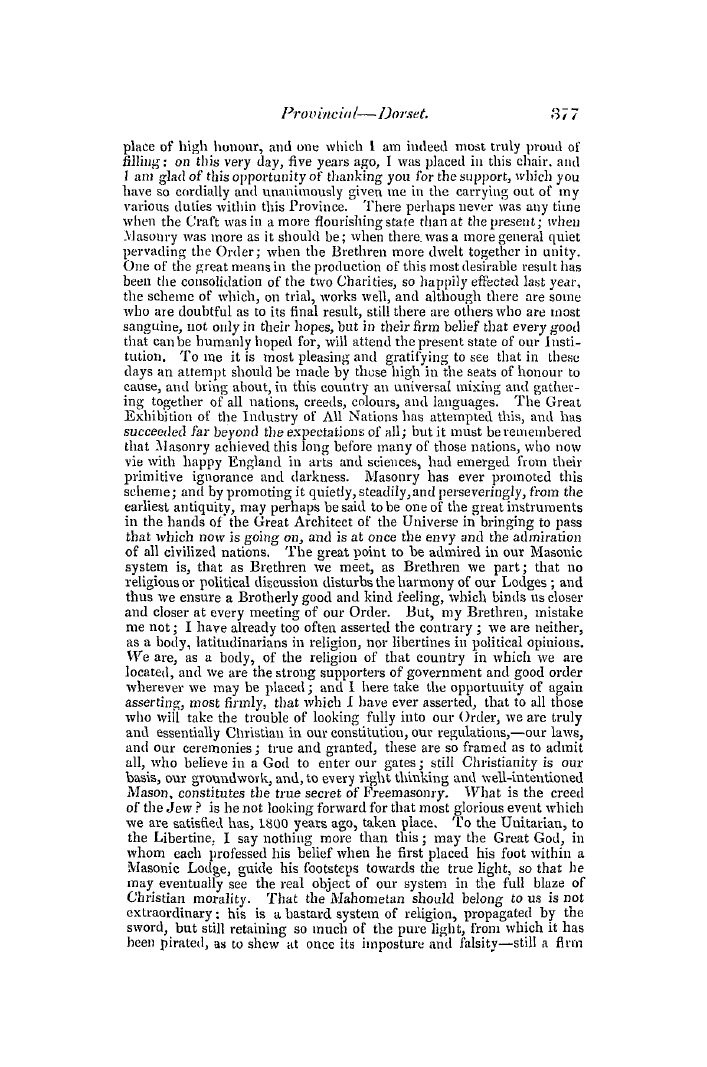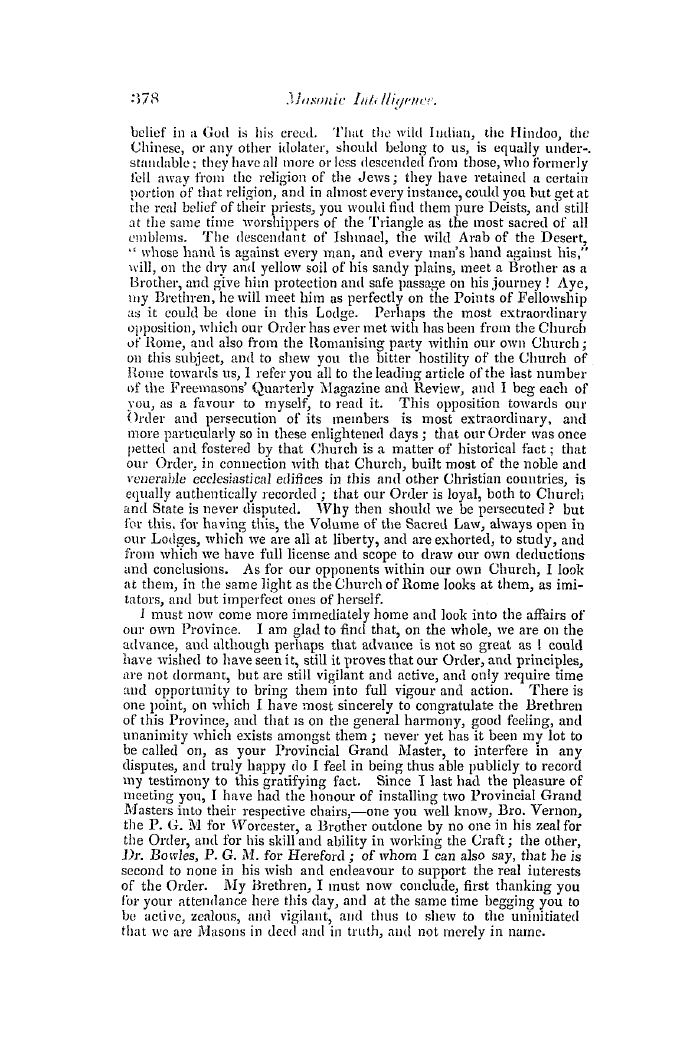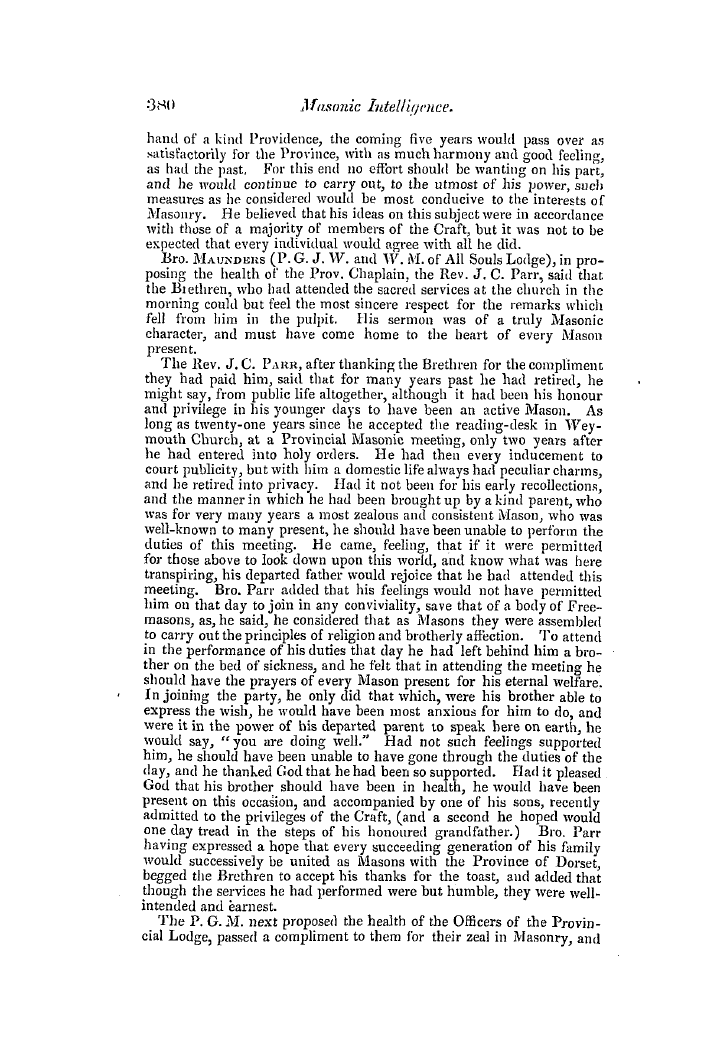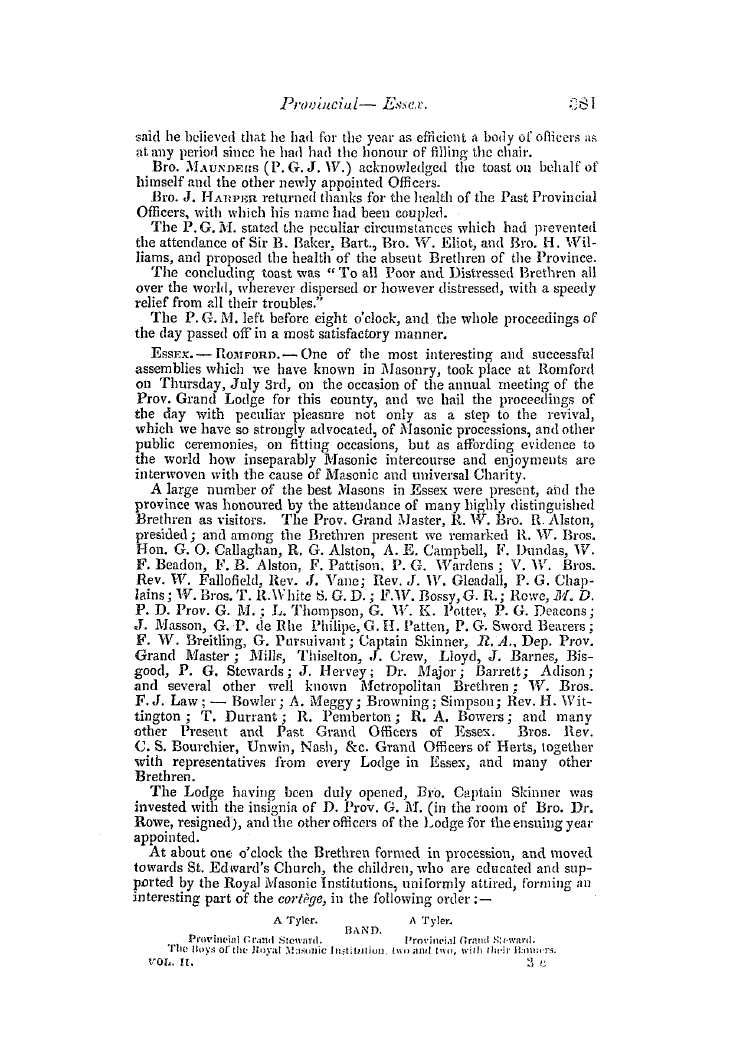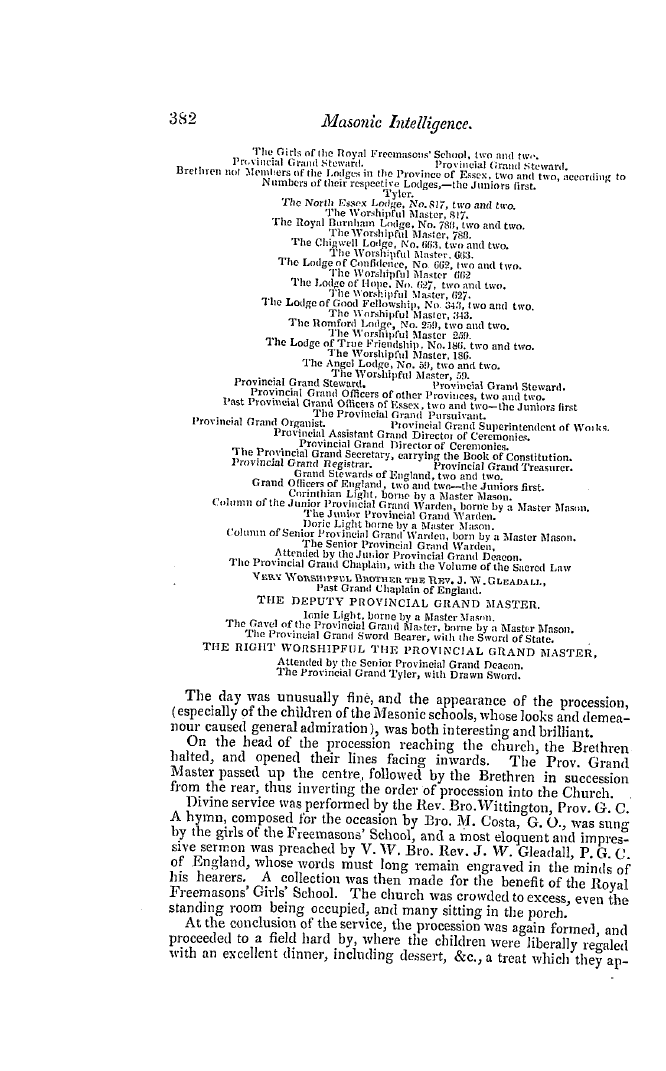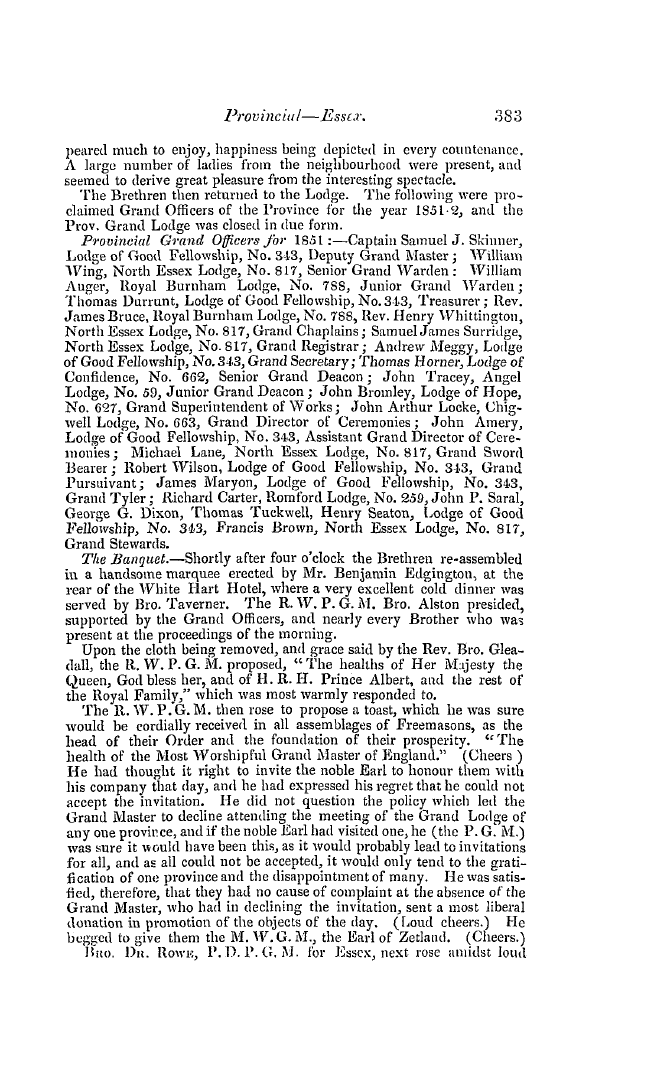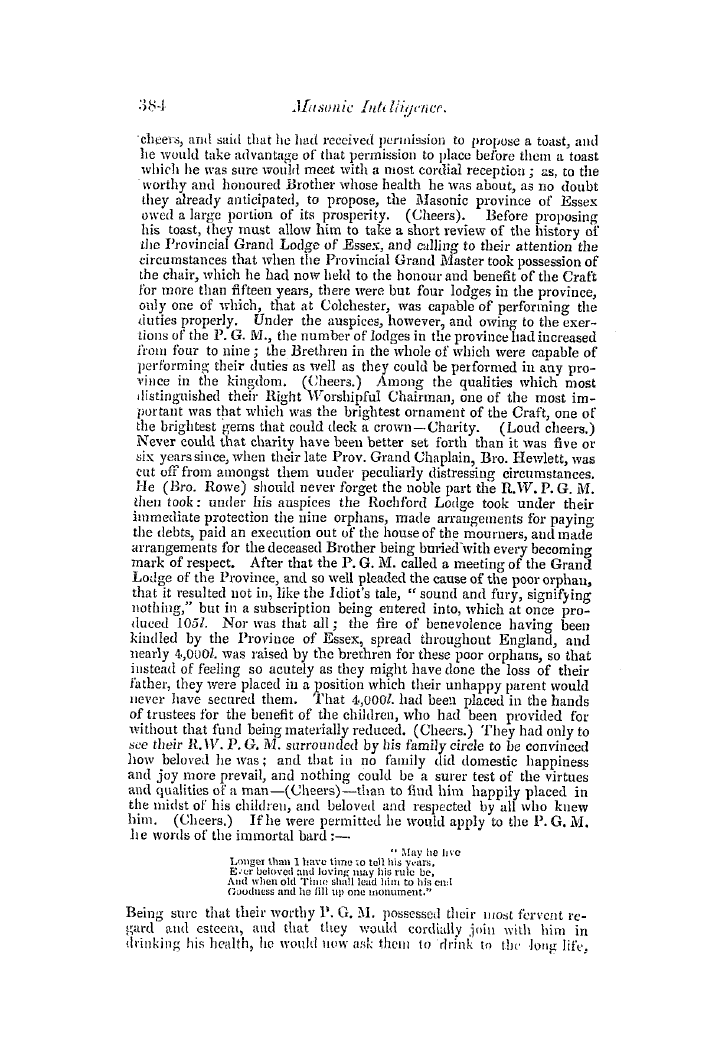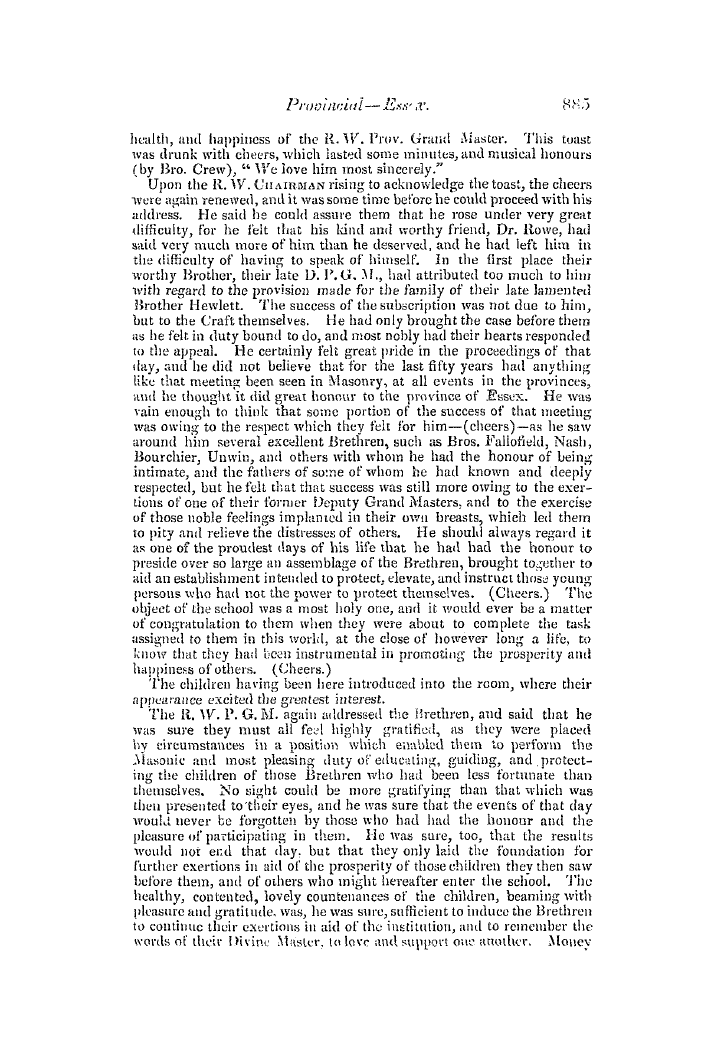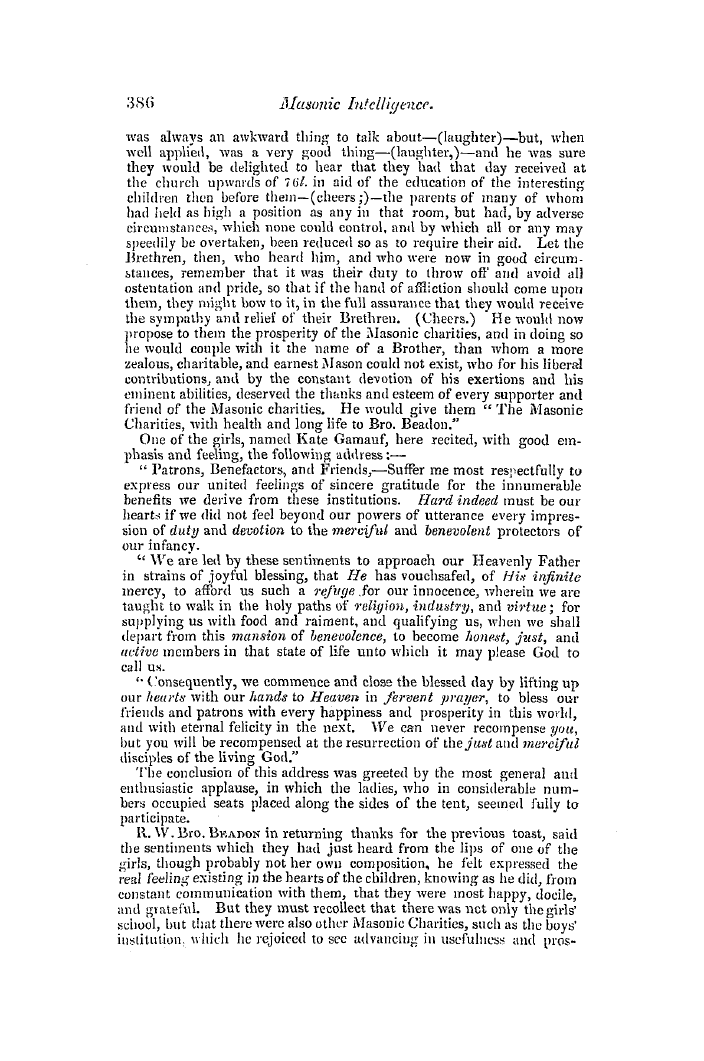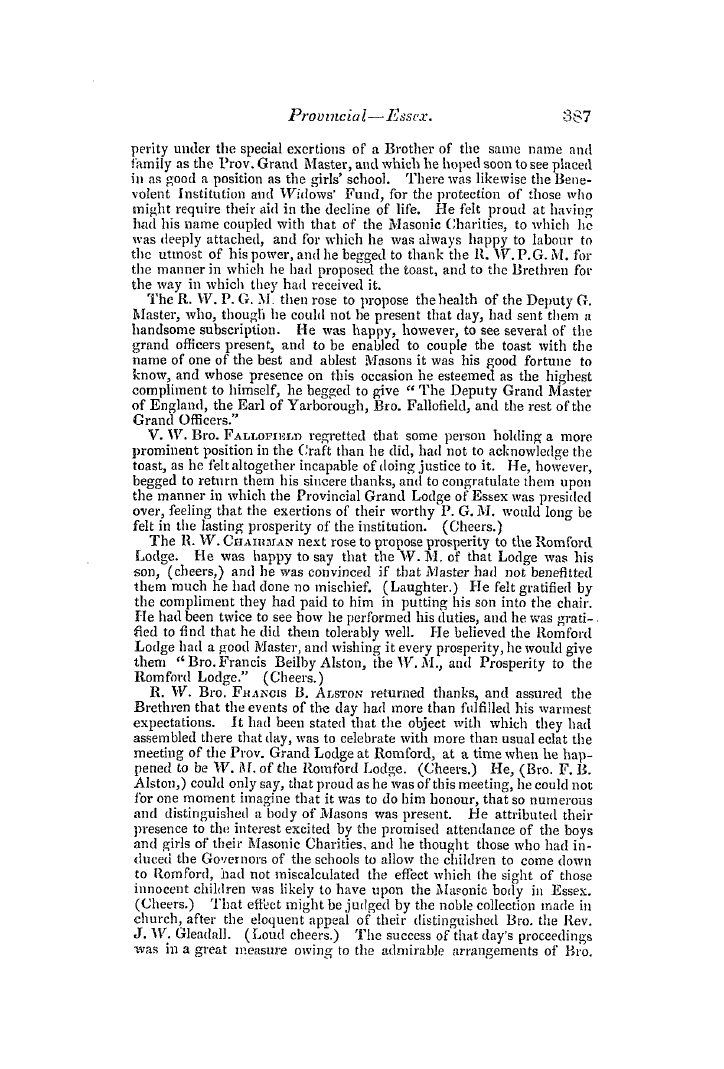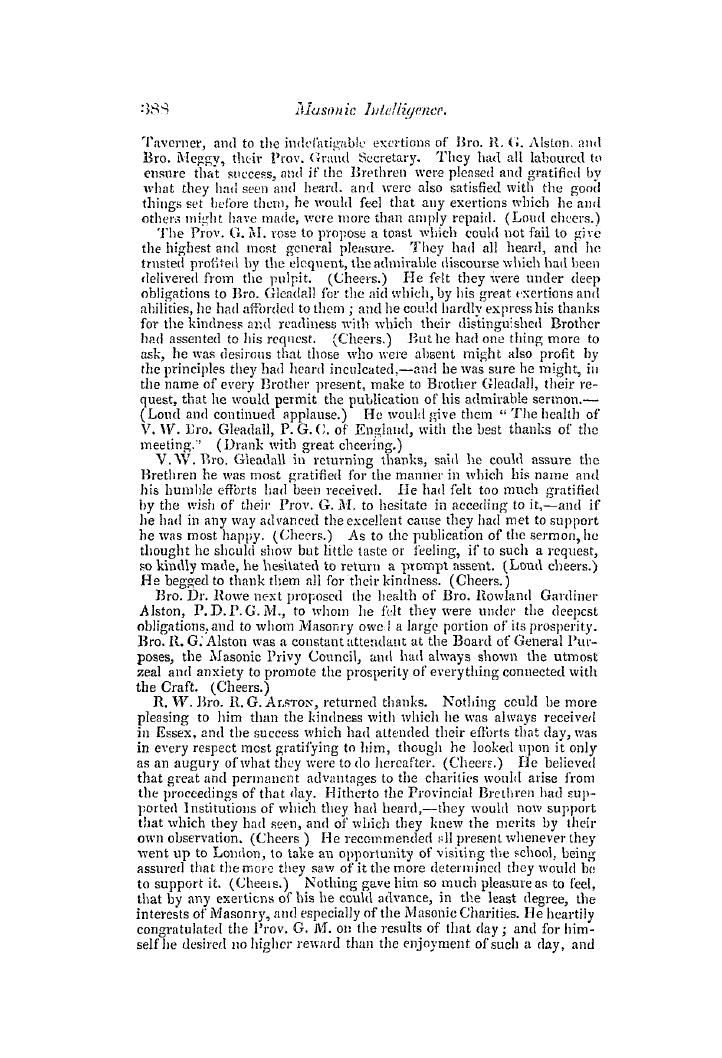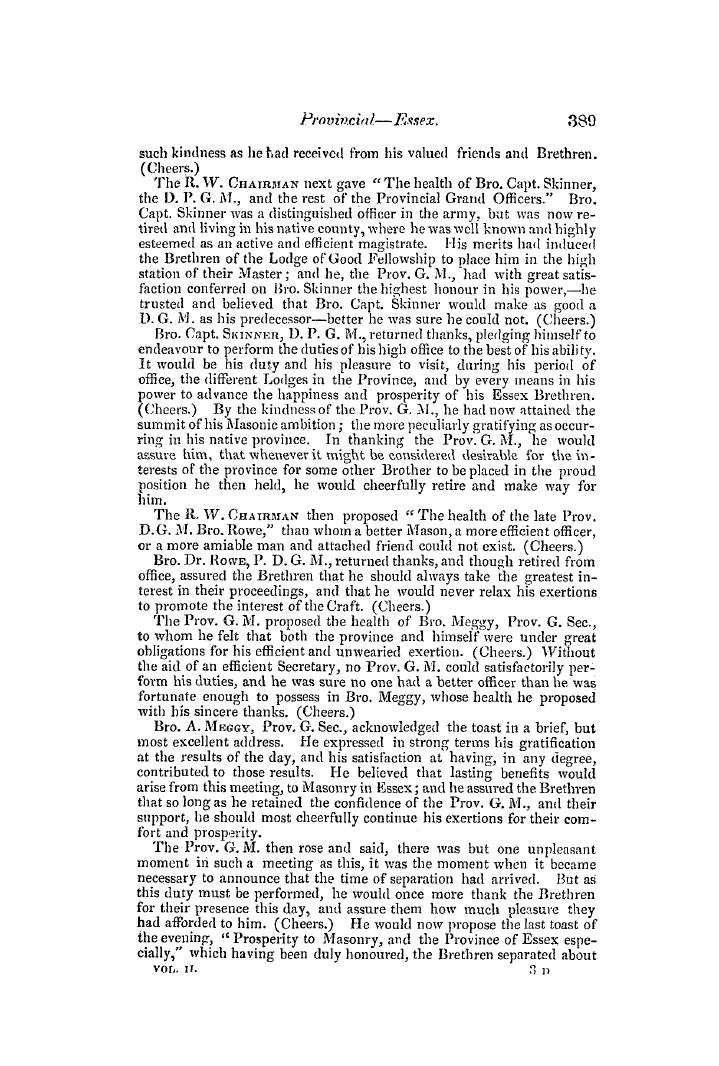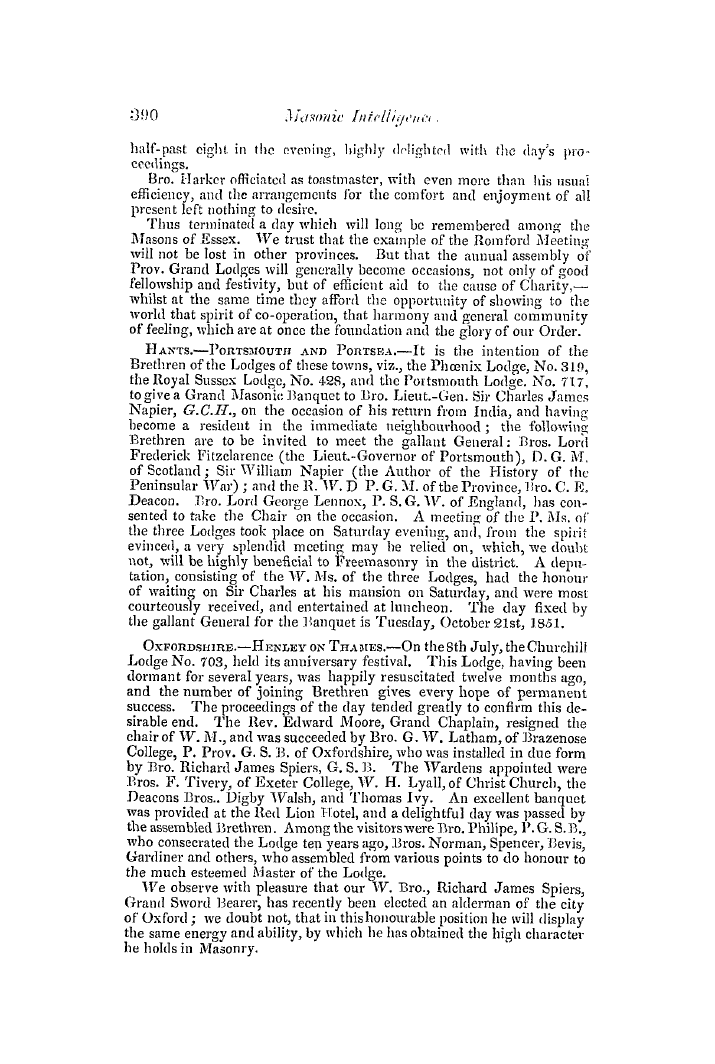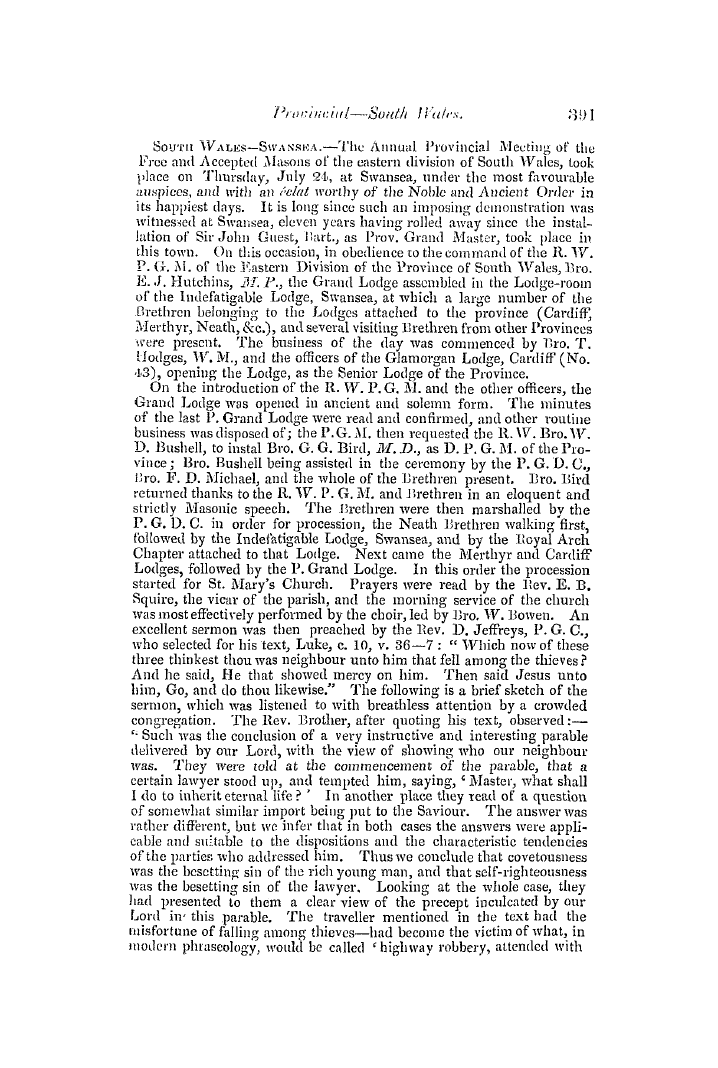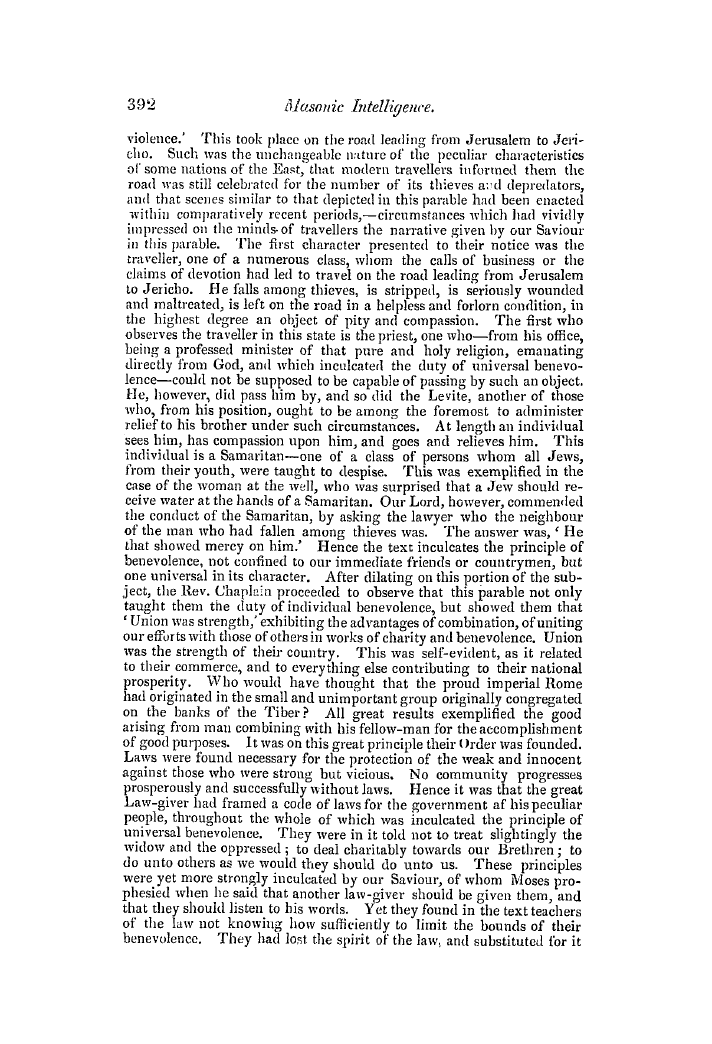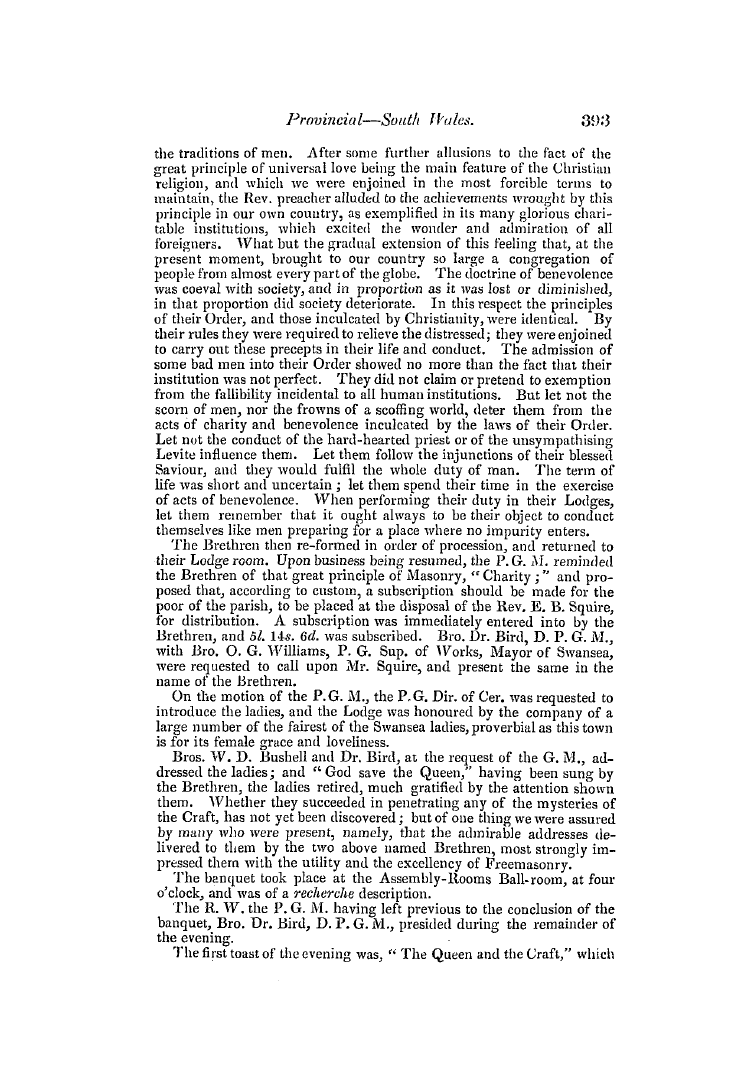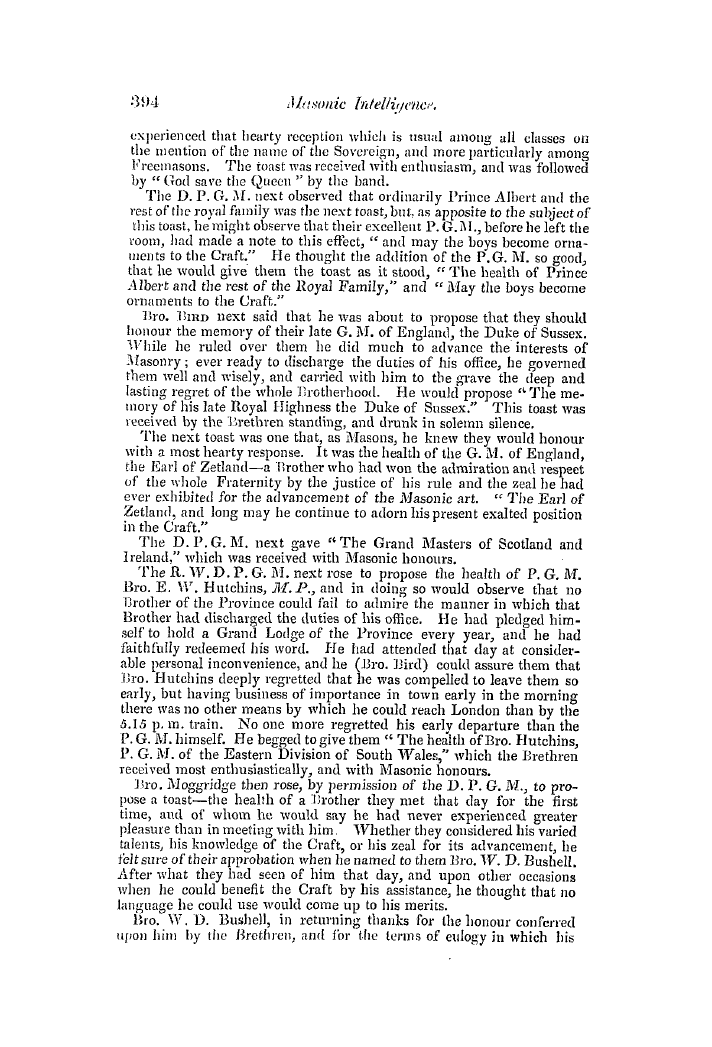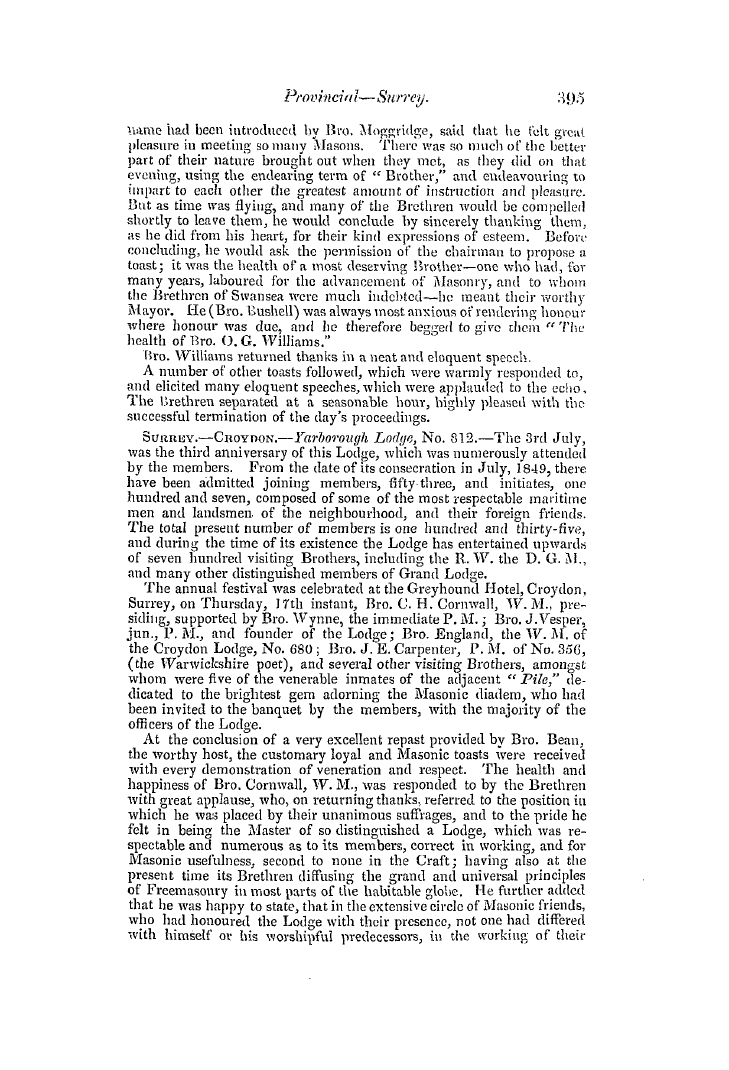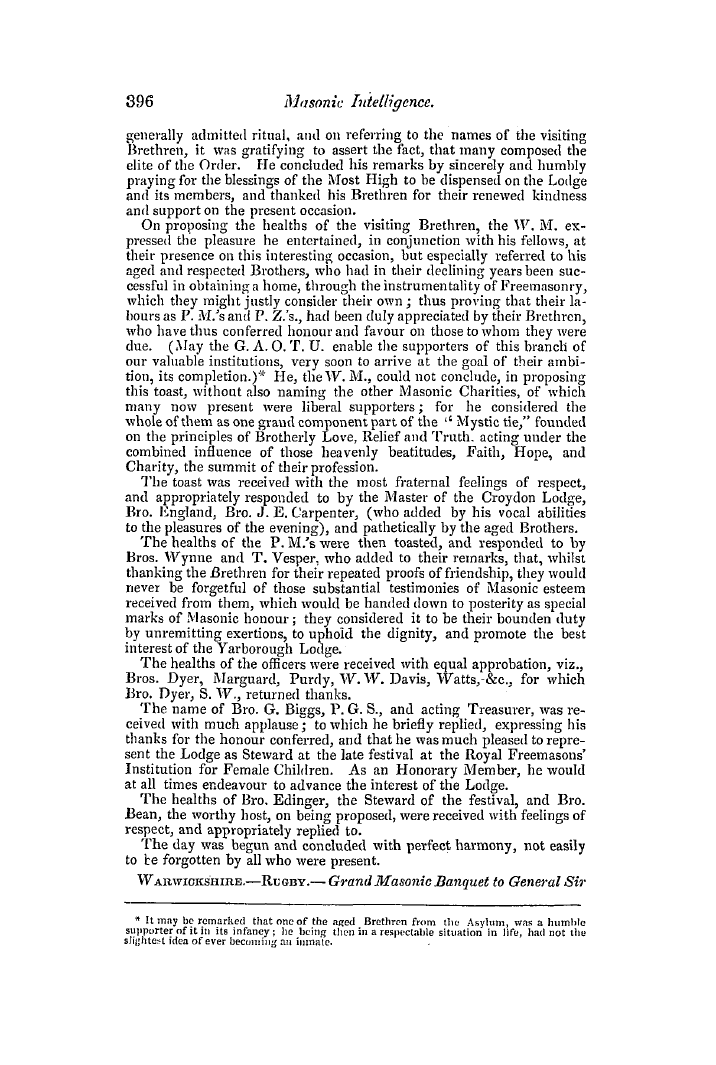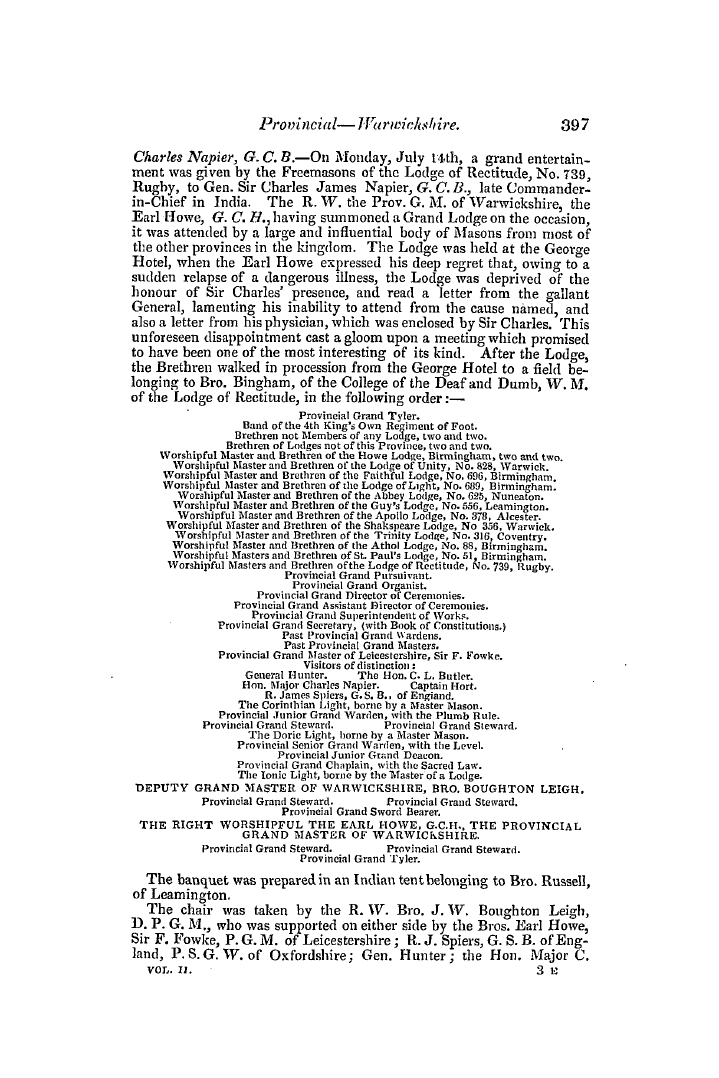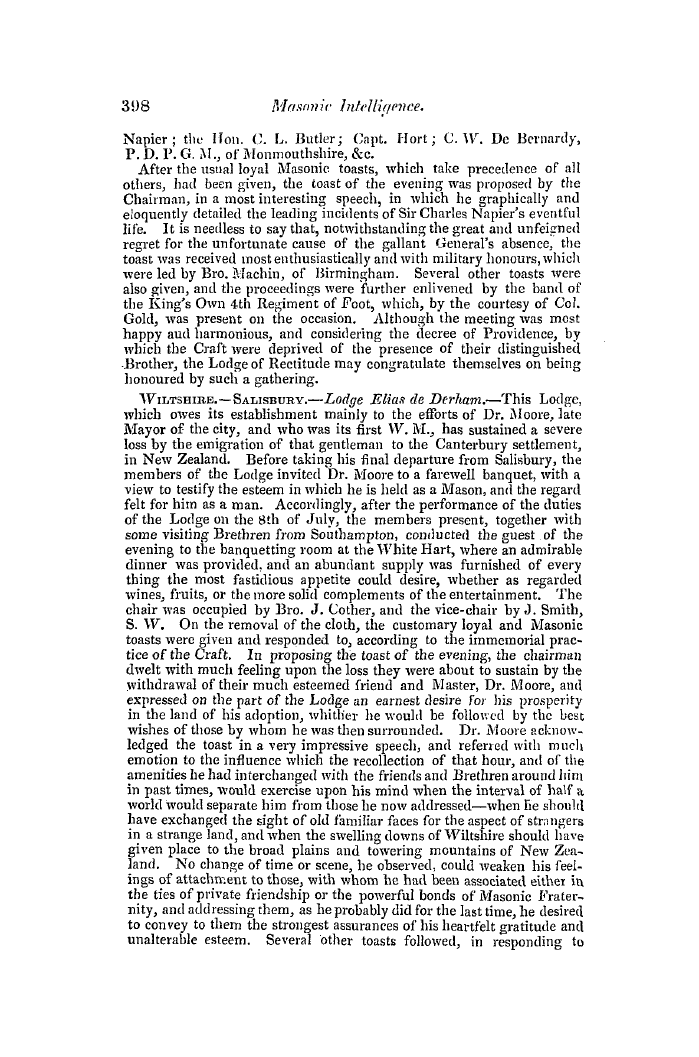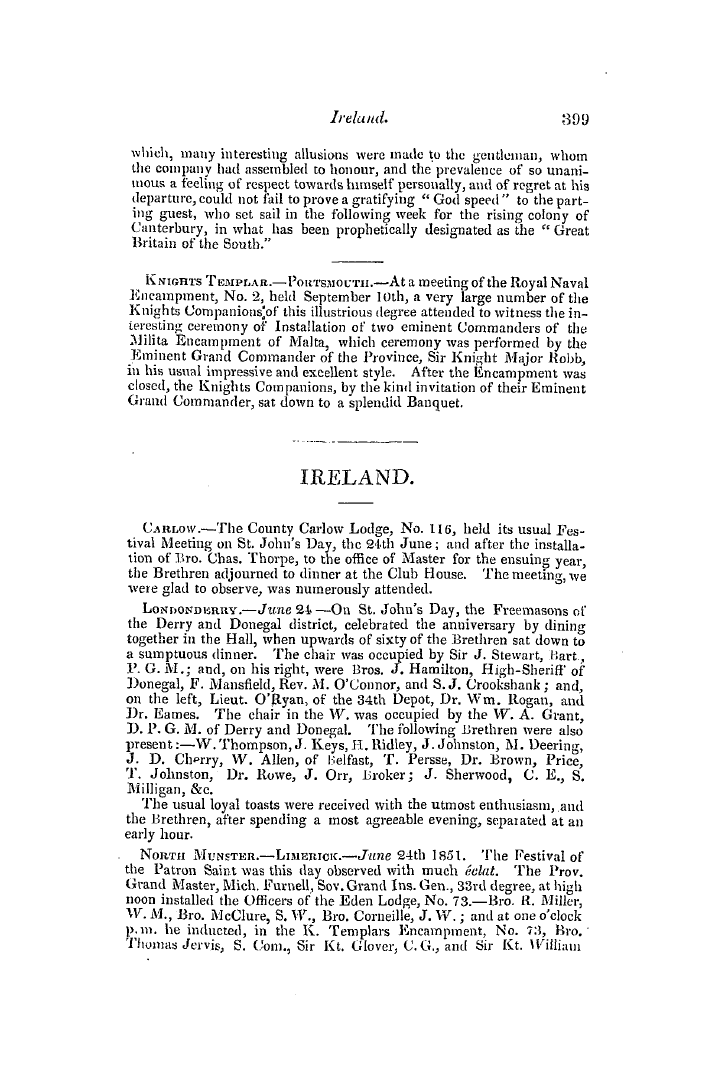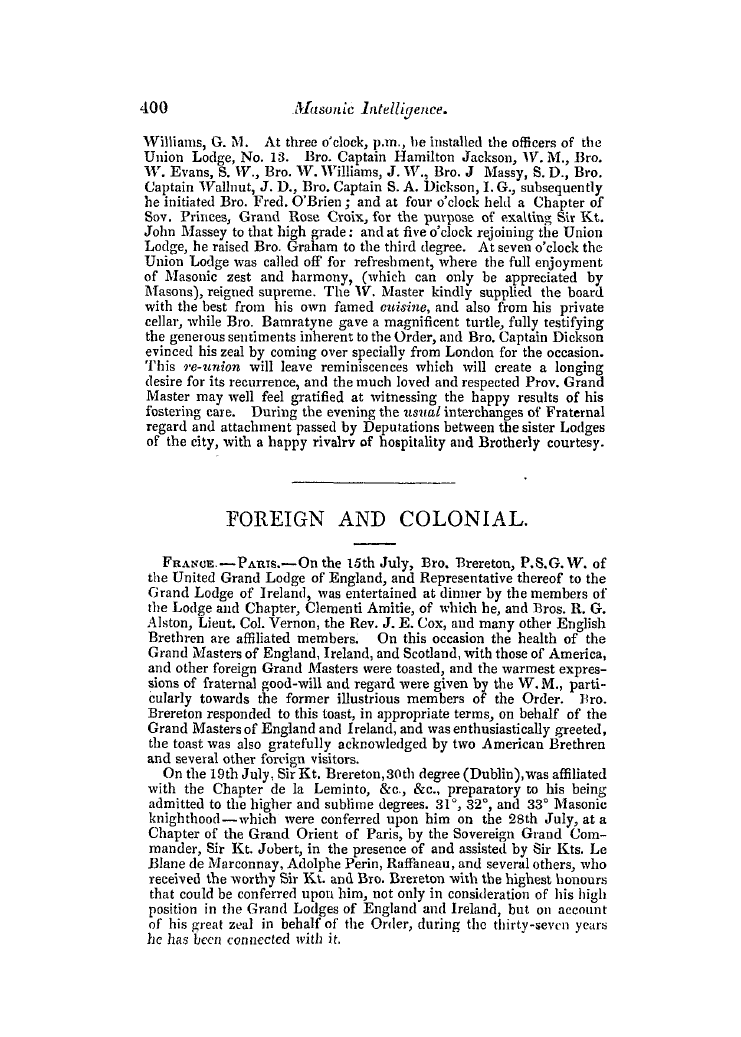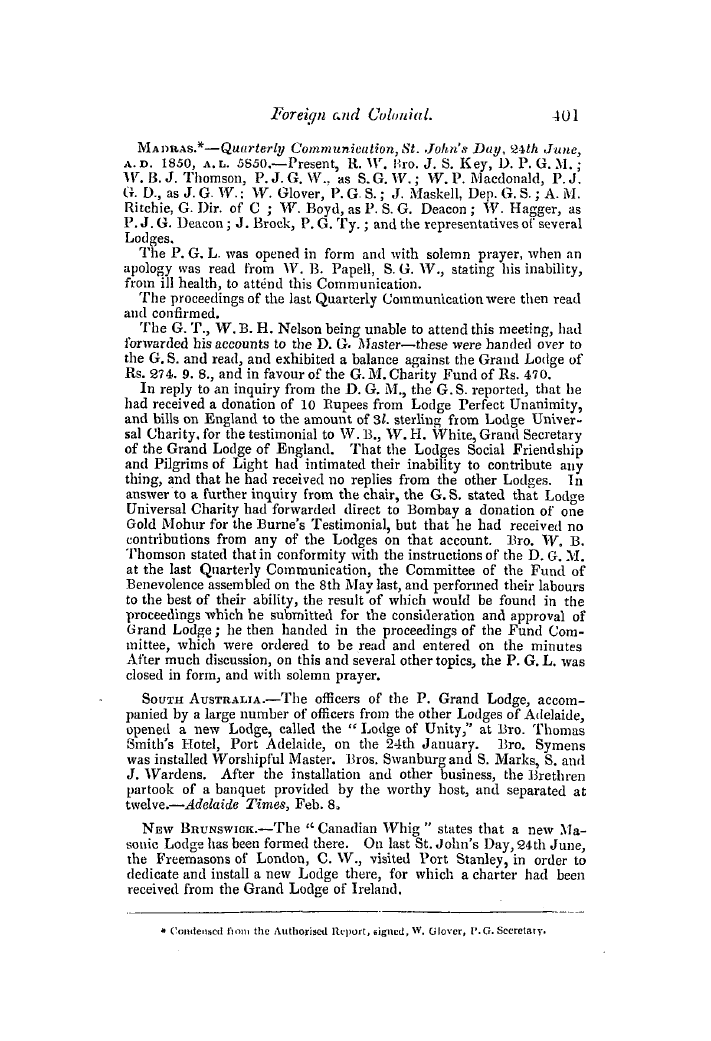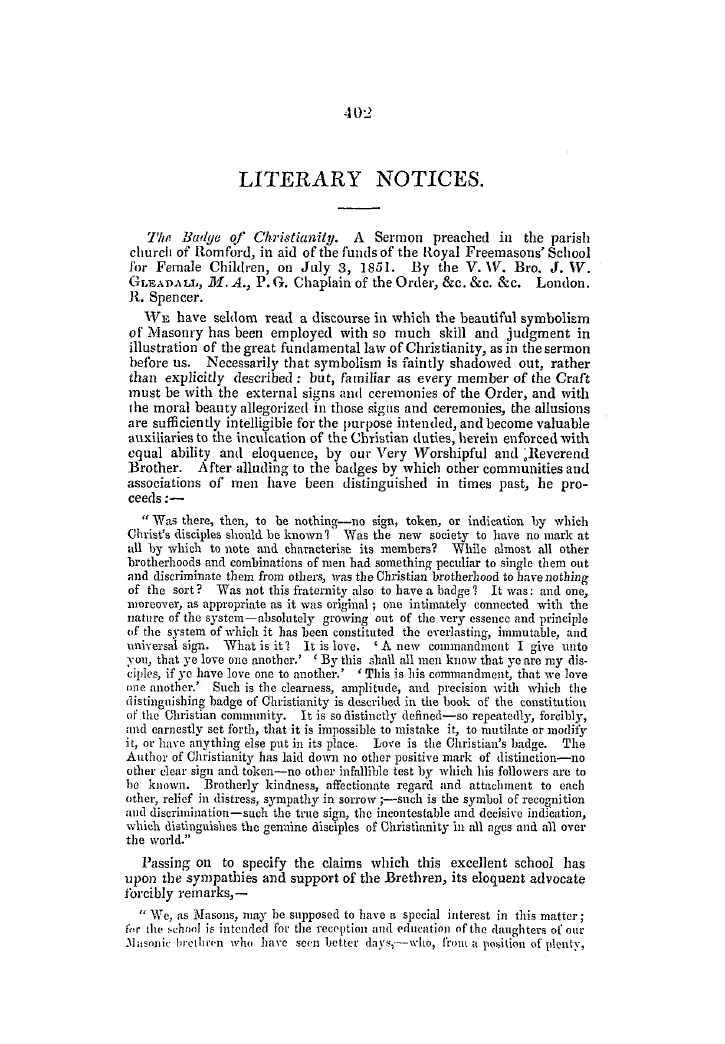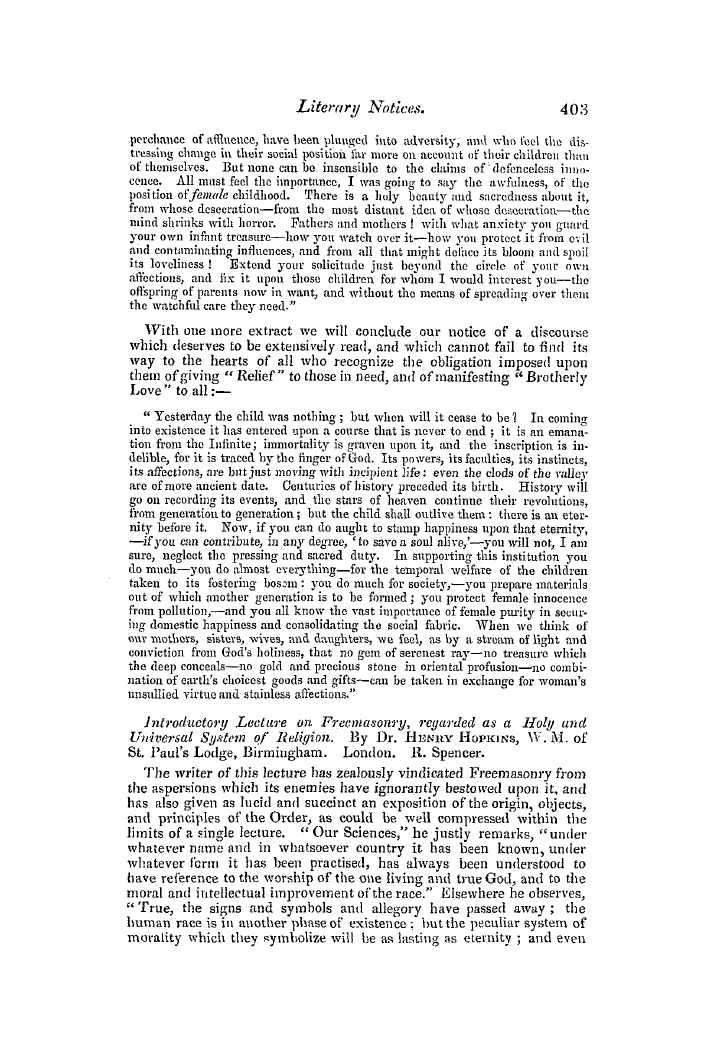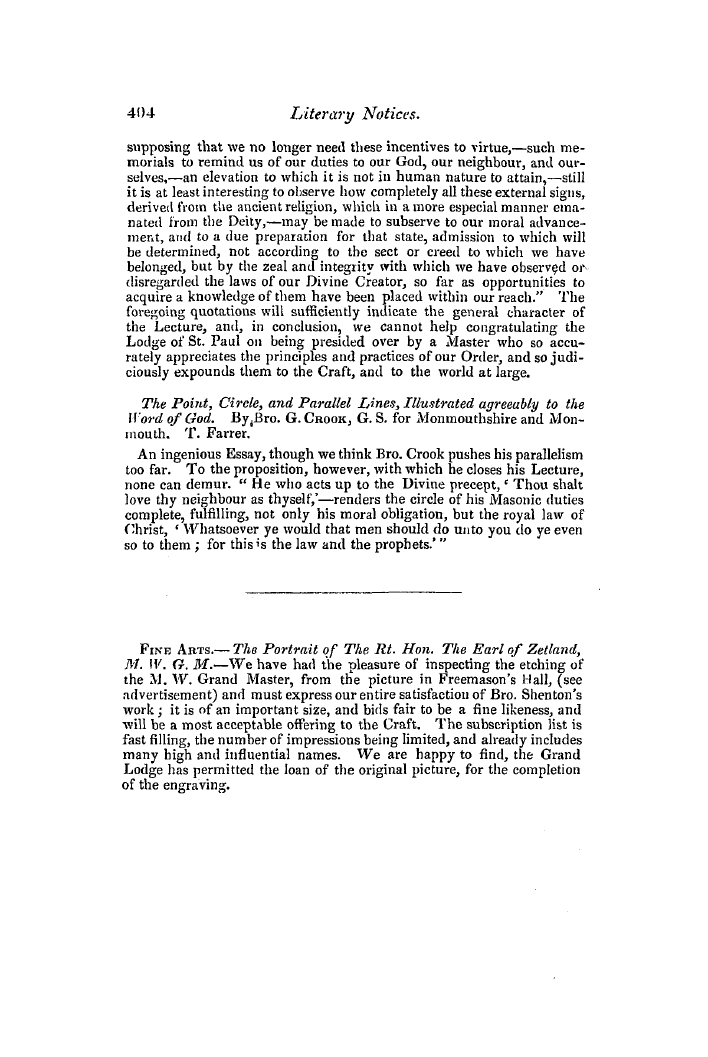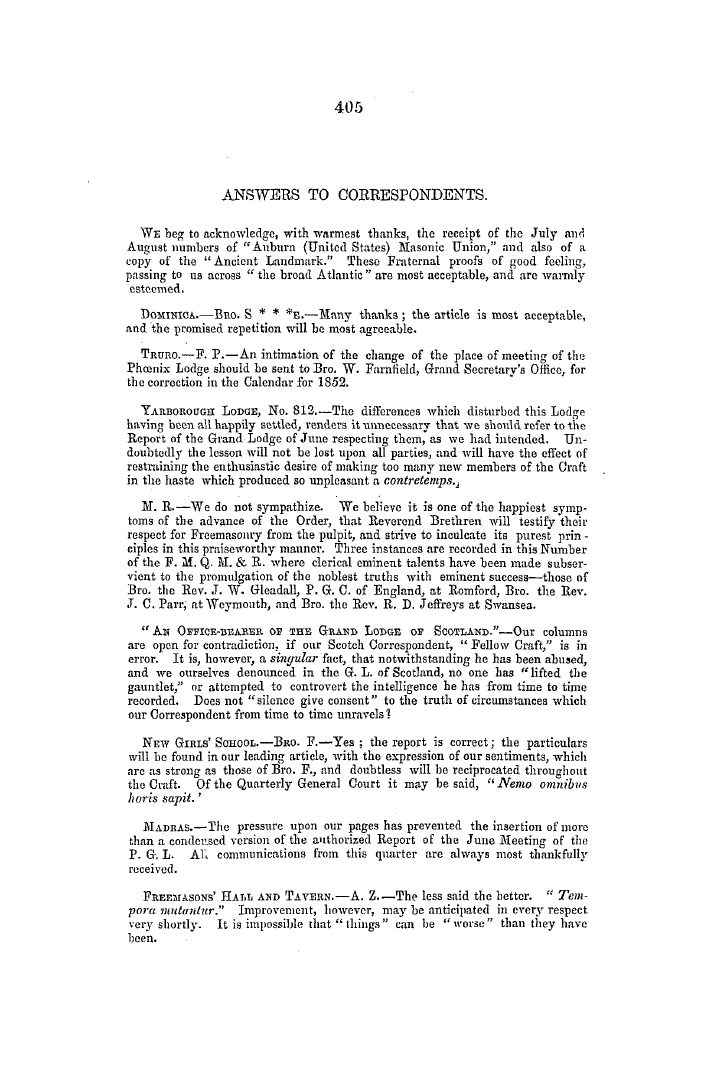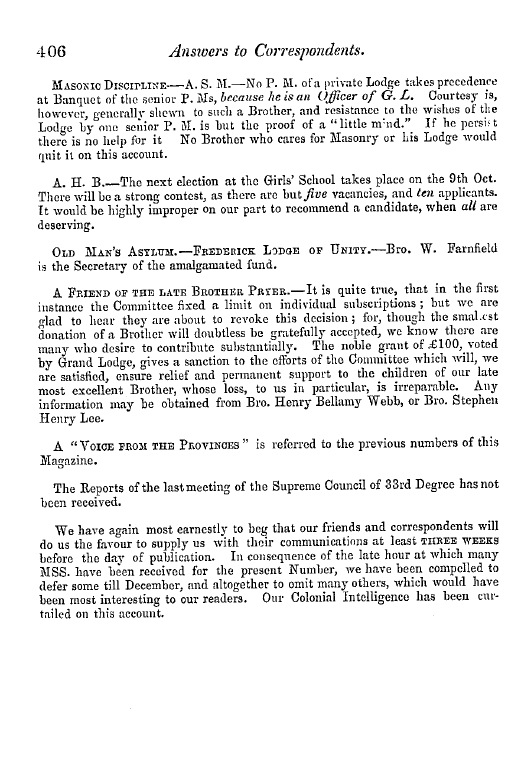-
Articles/Ads
Article THE REVELATIONS OF A SQUARE. ← Page 13 of 14 →
Note: This text has been automatically extracted via Optical Character Recognition (OCR) software.
The Revelations Of A Square.
to Christianity for its principles ; that in all ages the English Fraternity consisted exclusively of Christians ; and that therefore the religion in which all men agree , was the Christian religion . The ancient Charges , which are now before us , were extracted from old Masonic records of Lodgesnot only in Great Britainbut in foreign countries ;
, , and at the time when those records were originally compiled , the religion in which all men agreed was the general religion of Christendom—of the Holy Church throughout all the world ; which , as has been justly observed , the Te Deum pronounces to be Christianity . The most ancient manuscript which passed through the hands of Bros .
Desaguliers and Anderson during their researches , gives a decided affirmation to this doctrine , as may be gathered from the following passage :
Bysechynge hym of hys hye grace , To stonde with zow yn every place , To conferme the statutes of kynge Adelston , That he ordeynt to thys Craft by good reson , Pray we now to God almyght , And to hys swete model- Mary bryght , That we mowe kepe these artyculus here . And these poyntes wel al y-fere .
* jj" * * * CAnd as thou were of a mayd y-borc , Sofre me never to be y-lore ; But when y schal hennus wende , Grante me the blysse withoute ende ; Amen ! amen ! so mot hyt be .
This manuscript is supposed to have been compiled in the time of Athelstan , and I should therefore conceive its authority to be decisive . " In the above-mentioned year I had passed to a new Master and a new Lodge ; and the first conversation that I heard was on the subject of a pretended revelation of
Martin Clare ' s revised lectures and ceremonies , in a book called ' The Testament of a Mason ;' where itwas feigned that the formula hacl been found amongst the papers of a deceased Brother high in office , ancl , consequently , might fairly be presumed to contain the real secrets of the Order . The question was asked , Who is the author ? and it was
subsequently traced to one of the unfaithful Brothers who had been disappointed in his expectations of beingnominated to a Grand Office .
Note: This text has been automatically extracted via Optical Character Recognition (OCR) software.
The Revelations Of A Square.
to Christianity for its principles ; that in all ages the English Fraternity consisted exclusively of Christians ; and that therefore the religion in which all men agree , was the Christian religion . The ancient Charges , which are now before us , were extracted from old Masonic records of Lodgesnot only in Great Britainbut in foreign countries ;
, , and at the time when those records were originally compiled , the religion in which all men agreed was the general religion of Christendom—of the Holy Church throughout all the world ; which , as has been justly observed , the Te Deum pronounces to be Christianity . The most ancient manuscript which passed through the hands of Bros .
Desaguliers and Anderson during their researches , gives a decided affirmation to this doctrine , as may be gathered from the following passage :
Bysechynge hym of hys hye grace , To stonde with zow yn every place , To conferme the statutes of kynge Adelston , That he ordeynt to thys Craft by good reson , Pray we now to God almyght , And to hys swete model- Mary bryght , That we mowe kepe these artyculus here . And these poyntes wel al y-fere .
* jj" * * * CAnd as thou were of a mayd y-borc , Sofre me never to be y-lore ; But when y schal hennus wende , Grante me the blysse withoute ende ; Amen ! amen ! so mot hyt be .
This manuscript is supposed to have been compiled in the time of Athelstan , and I should therefore conceive its authority to be decisive . " In the above-mentioned year I had passed to a new Master and a new Lodge ; and the first conversation that I heard was on the subject of a pretended revelation of
Martin Clare ' s revised lectures and ceremonies , in a book called ' The Testament of a Mason ;' where itwas feigned that the formula hacl been found amongst the papers of a deceased Brother high in office , ancl , consequently , might fairly be presumed to contain the real secrets of the Order . The question was asked , Who is the author ? and it was
subsequently traced to one of the unfaithful Brothers who had been disappointed in his expectations of beingnominated to a Grand Office .































































